
The Greenbrier Bunker Tour: Essential Tips to Know Before You Go!
- Post author: Rachel Means
- Post last modified: 2023-10-25
Hidden beneath a luxury resort in the mountains of West Virginia lies one of the best kept government secrets of the Cold War: a nuclear fallout shelter for Congress!
This top secret facility remained updated and ready, and completely hidden from the public, for decades until a Washington Post journalist exposed it in the 1990s.
Today, you can visit The Greenbrier resort in White Sulphur Springs, WV and take the Bunker Tour to learn all about this crazy-but-true story!
We added it to an Eastern US road trip, but it’s also a good day trip option from New River Gorge National Park.
Here’s everything you need to know before you go on The Greenbrier Bunker Tour.
This post may contain affiliate links. As an Amazon Associate and associate of other programs, I earn from qualifying purchases. This means if you click a link and make a purchase, I may earn a small commission at no extra cost to you.
Table of Contents
A Secret Bunker Hidden Beneath a Luxury Resort…
The Cold War was dominated by uncertainty, and the US government decided it needed a backup plan to ensure the smooth continuation of running the country in the event of a nuclear attack.
So, they built a secret bunker for Congress under a popular luxury resort in West Virginia.
The Greenbrier has been around since 1788, tucked away in the Allegheny Mountains . It’s been a favorite luxury resort for the rich and famous for centuries.
When President Eisenhower approached the resort about disguising the development of a secret bunker under the construction for the resort’s new West Virginia wing in 1958 , the owners were only too happy to oblige.
Construction and maintenance was done in such a way to limit the number of people that knew of the bunker’s existence. Most of The Greenbrier staff had no idea it was there.
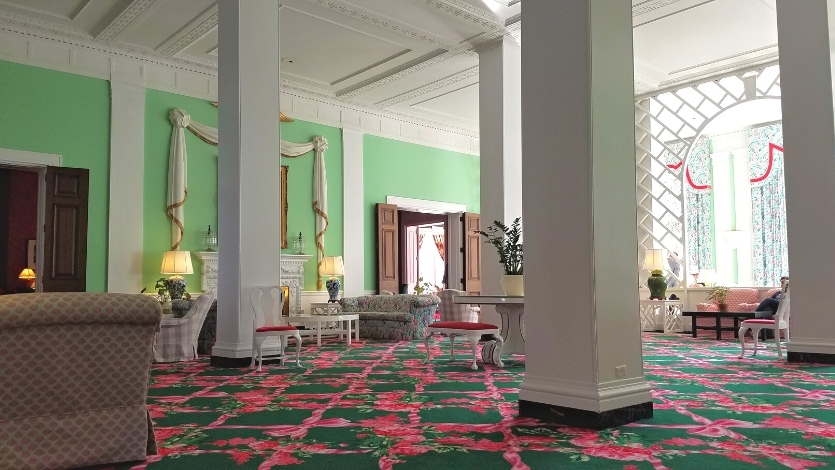
The Greenbrier Bunker was maintained and updated in secret for more than 30 years until an enterprising Washington Post journalist uncovered the secret in the 1990s and exposed it to the world.
With the location revealed, the bunker had to be decommissioned.
Today, it’s a unique historical landmark, a rare physical reminder of the unseen dread that permeated society and dictated serious decisions during the Cold War.
Getting to The Greenbrier
The Greenbrier Resort is located in White Sulphur Springs, WV, just off of I-64, very close to the West Virginia/Virginia state line.
There’s no way around it: you have to drive to get to here. You won’t find any urban centers with convenient airports close by.
It’s a 4 hour drive from Washington, DC or Charlotte, NC. The closest cities of any size are Roanoke, VA or Charleston, WV, a 1.5 hour or 2 hour drive, respectively.
Most visitors come to The Greenbrier to escape cities for a relaxed, outdoor setting. One thing this area is great at is outdoor recreation.
The resort is about 2 hours from the southern entrance of Shenandoah National Park or an hour and a half from the New River Gorge Bridge and the northern end of that national park and preserve.
We highly recommend adding The Greenbrier Bunker Tour as a stop on a broader road trip through the region. Try our 7 Day Eastern USA Road Trip or make your own!
What to Expect on The Greenbrier Bunker Tour
The Bunker Tour at The Greenbrier is a 90 minute, guided group tour through the once top secret area built to shelter both houses of Congress in the event of an emergency.
The tour begins in one of the front lobbies at the hotel, reveals one of the hidden entrances inside the resort, and then continues through the secret bunker’s spaces, like the blast door, decontamination chambers, living spaces, and working spaces.
They even purposely made some of the resort décor a bit nauseating near the secret entrance to the bunker, so resort guests would feel uncomfortable and leave the area.
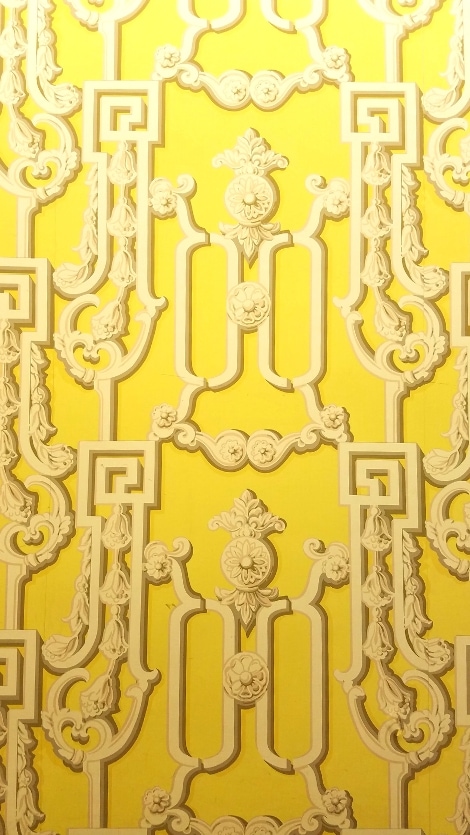
History fanatic or not, this is a fascinating tour straight out of a dystopian novel , except it was a real emergency measure implemented during the Cold War.
Many alive today can still remember the hint of doom lingering over everyday life, but the younger generations that didn’t live it can better appreciate the preparedness that went into assuming you could be hit by a nuclear weapon at any moment.
Rather than spoil the tour with a room-by-room account of what you’ll see, we’ve instead included some important things to know before you go on The Bunker Tour .
The Greenbrier Resort is fancy !
Prepare to be blown away by the resort itself before you even get to your tour. This is a luxury, upscale resort with all the fancy trimmings.
The entire resort is walled off and private. The front entrance is gated. They’re all about privacy, which comes in handy when you’re also concealing a bunker that can house the entirety of Congress.
The drive up to the lobby is immaculately landscaped . Depending on the time of year you visit, you’ll be greeted by either an impressive blooming flower display or a giant, decked out Christmas tree.
You’re greeted by valets and doormen when the shuttle drops you off at the front door. Inside, every square inch has been thought out and decorated.
The bright colors of Dorothy Draper’s designs are a bit much for some people, but take a moment to appreciate the marble floors and plush carpet you’re walking on, the paintings you’re casually walking past, and the little touches like writing tables.
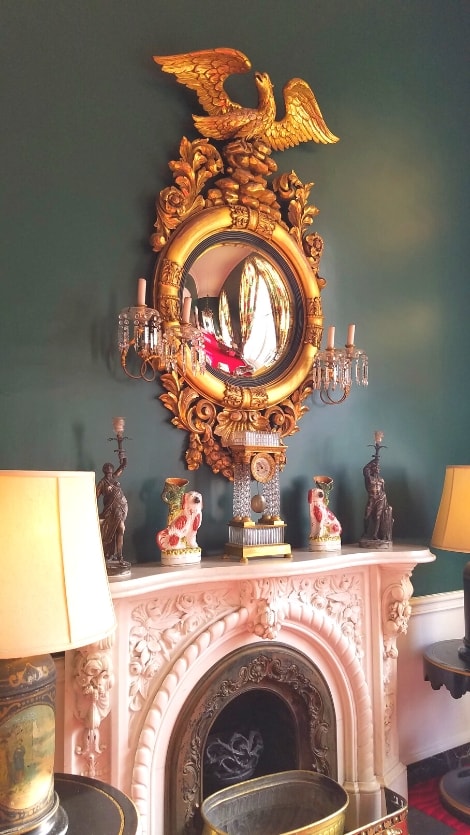
Is There a Dress Code for the Greenbrier Bunker Tour?
You don’t have to wear anything super fancy for the tour. In fact, comfortable walking shoes are encouraged for the Bunker Tour.
The Greenbrier does have a dress code , but it’s not as ominous as it sounds. It’s mostly for dining and evenings, and so guests don’t walk around in nothing but swimsuits.
Resort casual usually means a collared polo shirt for men, blouses for women, and bermuda shorts or pants for all. No ripped, torn, or cut-off clothes. Steer clear of political or offensive apparel. No ballcaps.
We visited in November and wore dark jeans (no holes or rips), tennis shoes, and t-shirts under lightweight jackets.
We don’t normally stay in places this luxurious, so we were impressed by the attention to detail. We also felt a bit underdressed at first.
But once we met the other guests on the tour, that feeling went away. At least half of our group were dressed in similar, relaxed clothing like us. There were some in impeccable resort casual, too, so either way is fine.
No electronics, bags, or photos allowed.
The Bunker has been decommissioned and declassified, but that doesn’t mean it’s giving away all its secrets just yet.
There’s a very strict no bags, no electronics, and no photos policy.
They have lockers at the beginning of the tour where you store your cell phone, purses, etc. If you don’t feel comfortable leaving these items in a locker, then don’t bring them with you to the tour.
Some of the space in the former bunker is now rented by private companies for server storage, among other things, I’m sure.
This is the primary reason for the security measures. It’s not just another government cover up!
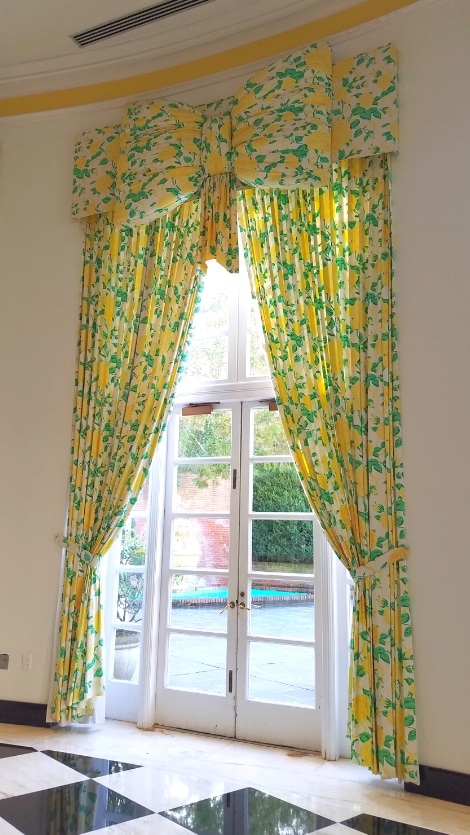
Lots of walking but not a lot of stairs
The Bunker Tour information page specifically calls out the dress code as “comfortable shoes” because you’re on your feet and walking for the majority of the 90 minute tour.
The good news is there aren’t many stairs! A few spots throughout the tour provide a chance to sit down while your guide explains more about the room you’re visiting.
Greenbrier Bunker Tour: Practical Info & FAQs
- Cost: $40 per adult, $20 per kid ages 10-18
- Duration: about 1.5 hours
- Reservations required: Call ahead to reserve your spot. Tour times vary by day and guide availability. No online tour reservations.
>> Can I Do the Bunker Tour If I’m Not Staying at The Greenbrier Resort?
Yes, absolutely! Call ahead to reserve your spot. (No online reservations unfortunately.) Then, the resort will send you directions for where to park, how to get to the resort, and where to meet up.
When we day tripped here as part of our bigger eastern US road trip , we parked at the train depot, a resort shuttle bus took us to the front entrance, and we rendezvoused with the tour group in one of the front lobbies.
>> Are Private Bunker Tours Available?
Yes, at a price. You’re essentially buying out a timeslot to book a private tour.
Therefore, the cheapest private tour option is $900 for a tour time before 5PM. After 5PM, the price and mandatory gratuity increase.
You’re still allowed up to 25 people on a private tour, so costs could be split amongst yourselves if you’re trying to guarantee your whole group is on one tour time.
>> Can Kids Come on the Greenbrier Bunker Tour?
Yes, ages 10+ are welcome.
>> Will Kids Get Bored on the Bunker Tour?
Depends on age and interests. I haven’t met a kid yet that thought moving an enormous blast door by themselves was boring.
The history might go over younger kids’ heads, but the guides try to make it interesting for them nonetheless. Tweens and teens will get a kick out of the “latest technology” displayed in the bunker.
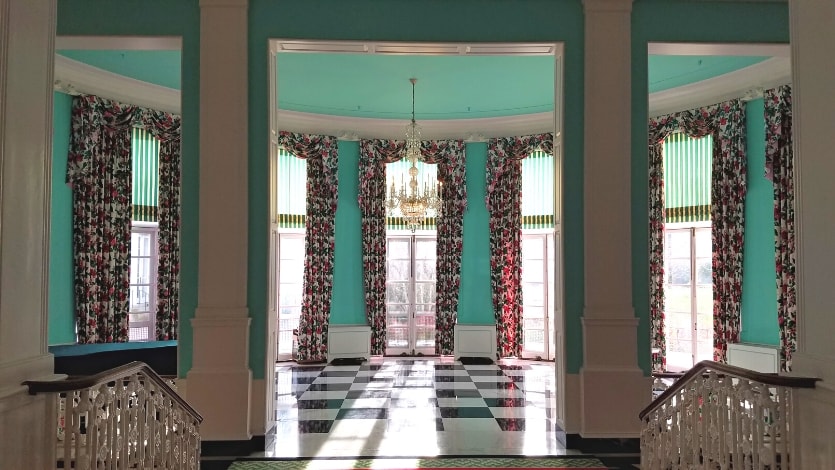
The Greenbrier Bunker Tour: A Fun Road Trip Stop Worth Your While
If you’re in the area of White Sulphur Springs, West Virginia or you’re passing within detour distance on a road trip, we highly recommend this unique stop!
The Greenbrier’s Bunker Tour reveals a fascinating piece of American history, perfect for breaking up a long drive as a stepping stone to your next destination.
Here are some more resources for an epic Eastern USA Road Trip that can easily accommodate a stop at The Greenbrier.
- 7 Day Eastern USA Road Trip Itinerary – Six States in 7 Days!
- 9 Useful Tips & Tricks for Driving Blue Ridge Parkway
- Is Visiting The Blowing Rock Worth It?
- Fun Things to Do in Little Switzerland, NC: A Blue Ridge Parkway Town
- How to Spend One Day in Cuyahoga Valley National Park
- A Gettysburg Self-Guided Driving Tour: Tips, Tricks, & Hacks!
- Exploring Antietam National Battlefield in an Afternoon
- Fun Things to Do in Harpers Ferry, WV
- 7 Short & Easy Hikes in Shenandoah National Park
- Touring Appomattox Court House – See Where the Civil War Ended!
Happy travels!

About the Author : Rachel Means
With six-figure student loan debt and only 10 PTO days per year, Rachel started traveling the world. A decade later, she’s paid off her loans, changed careers, and been to 36 US states and 14 countries. She’s an expert at planning and budgeting for travel and loves to help others do it, too! Read her full story here.

You Might Also Like
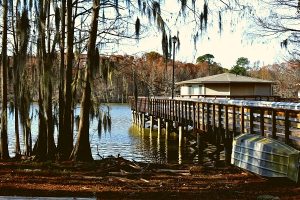
The Complete Guide to Santee State Park
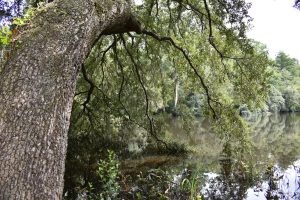
Guide to Colonial Dorchester State Historic Site
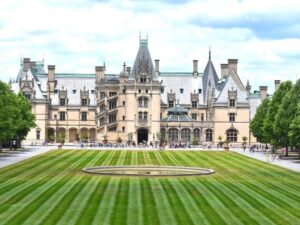
Finding Discount Biltmore Tickets: 9+ Places to Look If You’re on a Budget
This website requires JavaScript for some parts to function properly. Your experience may vary.

- Popular Searches
- Bunker Tour
- Visitors Guide
- The Greenbrier
- River Trail

Bunker Tour at The Greenbrier Resort
Did you know the U.S. Government sought The Greenbrier resort’s help in preparing for a Cold War attack on the nation’s capital?
Sure, The Greenbrier is best known for decadence and a certain joie de vivre, but it also ranks high on the list of favorite destinations of historians and biographers. Known as America’s Resort™, its history has paralleled our nation’s history as far back as 1778. But some of those parallels remained clandestine until relatively recently.
Yes, there are secrets hidden just behind The Greenbrier’s grand walls! We’re talking real secrets, as in classified government ops that stayed secret until 1992 when a Washington Post journalist unearthed the truth.
PROJECT GREEK ISLAND
It sounds like the stuff of movies, but it’s true. In 1958 during the Cold War at the height of nuclear panic across the United States, Project Greek Island was underway at The Greenbrier in quiet, little White Sulphur Springs, WV. At the behest of the Eisenhower Administration, a U.S. Government Relocation Facility was being built beneath what the public thought was simply an addition to the hotel proper. The addition, the West Virginia wing, was a cover-up. In reality, a concrete-encased fallout shelter was being buried 720 feet underground. It was intended to withstand an indirect nuclear attack and house all the members of Congress as well as a support staff of hundreds.
For more than 30 years, the bunker beneath the hotel remained the best-kept secret in West Virginia. That is until reporter Ted Gup broke the story to the world. Immediately the location was decommissioned, and over the next three years, the U.S. Government disentangled itself from The Greenbrier resort.

What’s a resort to do with a declassified bunker buried beneath its guest rooms and tennis courts? Give tours, of course!
THE BUNKER TOUR
Today, the story of how the bunker was constructed and maintained is preserved behind the 25-ton steel and concrete blast doors that for decades remained hidden by a façade of Dorothy Draper wallpaper. Whether you’ve booked a stay at The Greenbrier or you’re just spending the day, you can schedule a 90-minute underground tour of this former U.S. Government Relocation Facility we simply call “The Bunker.”
The tour covers details of the facility’s clandestine construction including secret communications between the U.S. Government and Greenbrier executives. You’ll learn about the cover company, Forsythe Associates, a TV repair business, operated by Pentagon experts poised to take command in the event of a nuclear attack.
Astonishingly, the bunker was outfitted and prepared for activation at a moment’s notice. Everything from food, clothing, medical care, and outside communications were kept at the ready from 1961 until 1992. Your tour guide explains how all this was accomplished. During the tour, you also have an opportunity to peruse a museum of artifacts leftover from the active site. The bunkrooms lined with metal-framed bunk beds are a shocking departure from the luxurious suites 60-feet above. It’s unsettling and amazing all at once.
Gup may have put it best in the last line of his story that ran in the Washington Post on Sunday, May 31, 1992: “For 30 years, [The Greenbrier’s] guests have come to play golf, to be massaged, to bathe in the restorative waters of the mineral baths, while some of the men who repaired their televisions and brought them movies made all things ready for a darker world after this world.”
BUNKER TOURS
To learn the rest of the story -- and believe us, you'll want to -- reserve your spot on the tour. Tickets are $47 for adults and $24 for youth 10 – 18. Keep in mind the minimum age is 10.
You are now signed up for the Greenbrier Valley e-newsletter!
Expect to see us in your inbox about once or twice a month.
Greenbrier Valley enews
Join the Greenbrier Valley enews, and stay connected with the latest news and happenings... with a few extra perks only for our subscribers!

- Posts by Date
- Posts by Location
- Wine Travel Posts
- USA Travel Posts
- Upcoming Posts & Trips
- Sign-up for our Newsletter
- Meet Stephanie & Adam
- Our Mission
- Our Travel Bucket List
- Travel Gear for Your Trip
- Travel Insurance Guide
- Media & Site Activity
- Interactive Workshops
Hidden in Plain Sight: The Cold War Bunker Tour at the Greenbrier

“I hope you’re ready for a relaxing vacation,” our tour guide said with a grin as he swiped his badge, unlocking a heavy door. “Welcome to the Greek Islands!”
As the door swung open, we weren’t facing a week of rest and relaxation on the shores of some sun soaked beach. Instead, we were staring down a long, sterile corridor once built exclusively to protect and maintain governmental continuity during the Cold War. 5,000 miles from Santorini and Mykanos, we were starting a tour of the famous bunker at the Greenbrier in White Sulphur Springs, West Virginia.

Our tour of the Greenbrier’s bunker began with a bit of a walk through the hotel, through bustling crowds that dissipated as we reached elevators that took us into its West Virginia wing. This is also where present day begins to fade into Cold War-era America. In the late 1950s, with growing concern that a nuclear war might be eminent, the U.S. government identified White Sulphur Springs as a solid contender to house a bunker for congress. The idea was that an attack on Washington would necessitate a safe place to relocate congress, including all 435 representatives and 100 senators, so government would not shut down during a time when we would desperately need leadership. Between 1959 and 1962, the bunker was built underground at the same time a well-publicized addition to the Greenbrier was built in the form of the West Virginia wing—effectively hiding the bunker in plain sight. The construction received the code name Project Greek Island to ensure its secrecy wasn’t compromised—hence our guide’s somewhat unconventional welcome.
While the bunker was in service, visitors to the Greenbrier would almost certainly miss it. One of the four entrances to the bunker is located where our tour got underway, in a large exhibition hall. Today, you can plainly see the huge, heavy blast door that would have closed to contain congress once they arrived by train from DC, but during the three decades that the bunker was active the door was hidden behind a screen that made it look like it was part of the wall.

Life inside of the bunker looked like it would have been bearable but unpleasant. In the dormitory, rows of bunk beds lined the walls, providing sensible accommodations for every member of congress as well as one aide or staff member per elected official. Health facilities stocked with medicine boasted the latest technology. Meals were served in a cafeteria, which to me was one of the more fascinating spaces; because it wasn’t large enough to seat everyone at once, the floors featured a black and white checkerboard tile that was supposed to be slightly disorienting, hopefully discouraging people from sitting too long at tables in order to have a steady rotation of people coming and going during meal times.

For thirty years, the bunker sat ready but empty, as workers regularly tested water quality and communications systems. Because its intended inhabitants could arrive at any moment, refrigerators and pantries were constantly stocked with fresh food. Every few days, the food would rotate up to the Greenbrier’s kitchen to make room for a new delivery, thus ensuring nothing was wasted. These processes stayed in place until 1992, when a Washington Post article by Ted Gup threw open the bunker’s doors to the public and revealed the secret location and purpose to the world. Once the article was published, it no longer made sense to keep the bunker operational; it was decommissioned soon after.
History is full of secrets and surprises, and touring the bunker at the Greenbrier places you right inside of a very interesting chapter in American history.
Having taken the tour twice, each experience was unique because each tour was peppered with different stories and accounts of how the bunker came to be and stayed at the ready in case it was needed. If you haven’t heard of the Greenbrier bunker tour—or the Greenbrier Hotel—it’s a terrific trip to make and well worth the drive.
Greenbrier Bunker Tour: Take This Trip
- As of February 2017, tours are $34 for adults and $17 for kids (ages 10-17) excluding taxes. Children under 10 can’t take the tour (it’s a lot of walking and talking, so most kids wouldn’t enjoy it, anyway).
- The tour is very popular with hotel guests and visitors alike, so make reservations in advance! Popular times, especially during warmer months, are likely to sell out!
- Cameras are not allowed on the tour, so be prepared to surrender both cameras and cell phones when you check in for the tour. Your belongings will be locked away and safely monitored, but you won’t leave with any pictures of your experience.
- The Greenbrier is a fully functioning hotel and resort, so take advantage of one of the onsite restaurants for lunch before or after your tour. Away from hotel grounds, your dining options will be a bit more sparse, so plan accordingly.
- The bunker is, at points, thirty feet underground, and it can get a bit chilly. Take a sweater to ensure you stay comfortable.
- Get an early start and add a winery or two to your itinerary! Coming from DC, you’ll pass by some great wineries as you drive on Interstate 81. Consider taking a morning tour of the bunker and spending your afternoon debriefing all your learned over a glass of wine. If you’re looking for recommendations, a few of our favorite Virginia Wineries won’t be too far off your path!
- One of our favorite “hidden gems” in Virginia is on the way to the Greenbrier! Stop by Covington, Virginia to see the Humpback Covered Bridge . Built in 1857, it’s the oldest covered bridge in Virginia and it makes a great place for a brief stop on your way to the Greenbrier.
More Information: Greenbrier.com/Bunker-Tours
Are you planning a visit to see the Greenbrier Cold War Bunker? The Greenbrier Resort has plenty of rooms, but they are a little higher priced than most hotels. For good reason, it’s a beautiful resort full of amenities and fun activities for visitors.
If you are looking for something a little more affordable, the town of Lewisburg, West Virginia is only 10 minutes west of the Greenbrier and you’ll find plenty of hotels to choose from. Here are a few deals to consider.
Want to learn more?
Here is a short video with additional footage and stories about this fascinating Cold War-era bunker under the Greenbrier.
Related Posts
The United States has a lot of interesting places to visit! Discover a few more through these articles!

Vint Hill Farms Station

Thomas Jefferson’s Monticello

7 Civil War Battlefields Near DC

West Virginia’s Haunted Hospital

Share This!

Virtual Roadtrip: The Greenbrier Bunker Tour
May 26, 2020 | South , Tours & Experiences
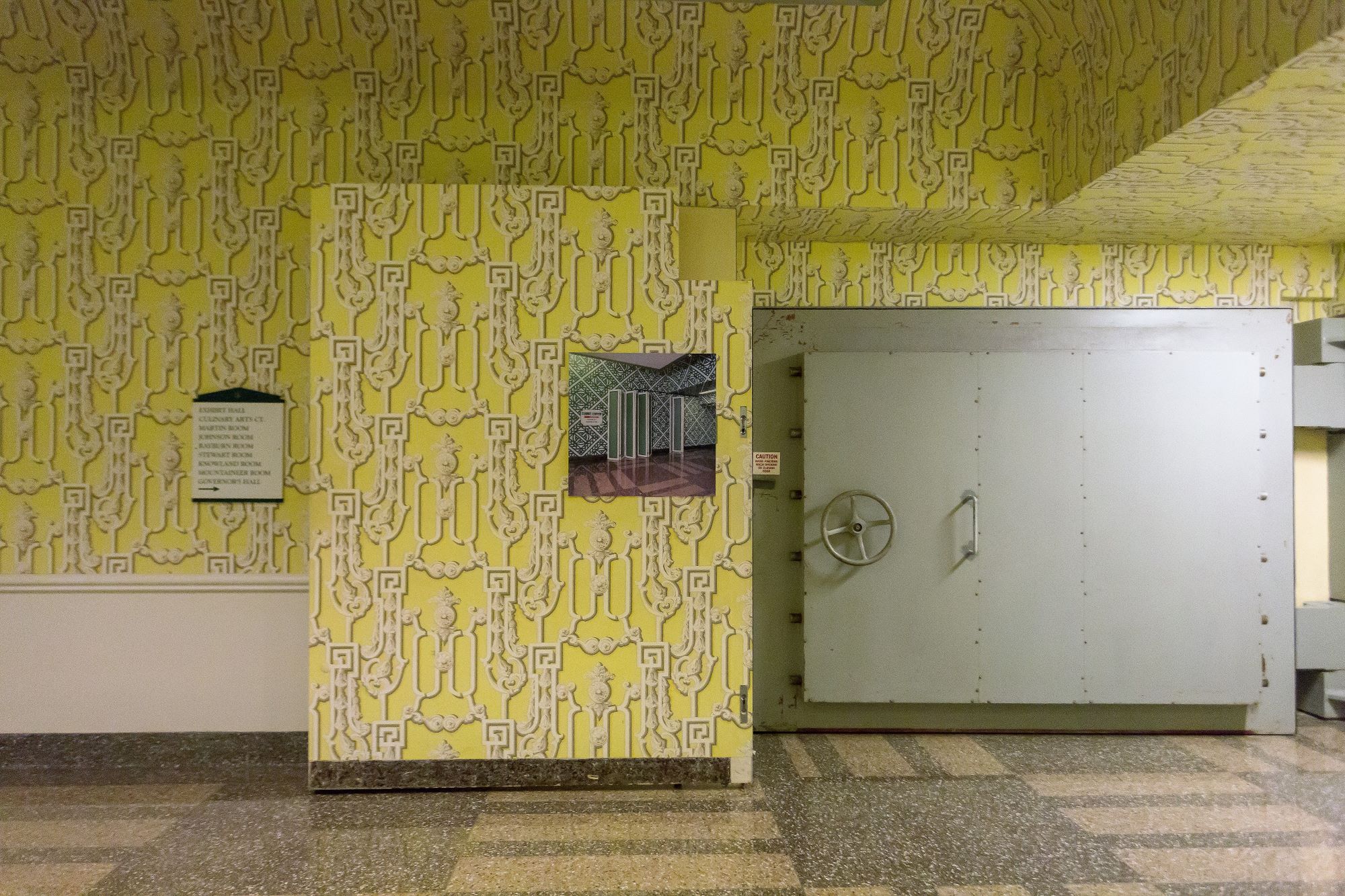
30 Years of Secrets Hidden in Plain Sight
Stop #22 on our Virtual Road Trip is the Greenbrier Bunker Tour ! The luxurious Greenbrier is a destination hotel in the Allegheny Mountains of West Virginia. The hotel was built in 1913, with 743 well-appointed rooms and 96 guest estate homes. The resort includes restaurants, unique shops, championship golf, a spa, and more than 55 activities to enjoy during your stay. If that’s not enough, a 103,000 square-foot gaming and entertainment venue opened in 2009 in the lower level of the hotel.
This is a similar description of the property that was published until 1992, when a Washington Post reporter discovered the previously classified “Project Greek Island.” In the 1950’s in the middle of the Cold War, the Greenbrier was chosen by the U.S. government to house a destination for Congress to seek shelter in the event of a nuclear war. Construction on the bunker was finished in 1962. Today, the 90-minute tour takes you 720 feet into the hillside as you explore a maze of underground rooms, including chambers for the House and Senate, dorms, a power plant, clinic, cafeteria, and more.
Did You Know? At the time, only a few people knew of the Greenbrier bunker’s existence— most members of Congress would never have been told until the onset of the emergency.
Travel Tip: Tickets can be purchased in advance or the day of your tour at the concierge desk. You may want to leave your cell phone in your room— they are not allowed on the tour and will be collected and stored until you leave the bunker. The tour isn’t cheap, but where else are you going to find a bunker with a 25-ton blast door?
Following the Connection
The bunker was built for 525 members of the government, all of whom have offices at the U.S. Capitol Building in Washington D.C. The Capitol is an architectural masterpiece and the tours are full of great stories and interesting facts. It’s also free!!
Next Stop: U.S. Capitol Building , Washington, D.C.
Detour: The Cold War between the United States and the Soviet Union lasted for over 40 years. The Cold War Museum is under development in Vint Hill, West Virginia. The Smithsonian Affiliate has raised over $3 million and will include a central hall with exhibits, a small theater, the main gallery, a picture gallery, library and study areas, and gift store. Check the website for updates on their progress and to view the online exhibits.
- Plan Your Trip
The Greenbrier is located in White Sulphur Springs , West Virginia, which has been a tourist destination for centuries. Since the late 1700’s, people have traveled to the area to enjoy the “healing” powers of the springs. The Greenbrier is a destination resort, so you really don’t need to leave the property; however, one of our favorite small towns, Lewisburg, West Virginia, is just 10 miles away. Here are some recommendations from the travel desk at Check-it-Off Travel to consider while planning your trip.
Photo: The Greenbrier Resort
Where to stay.
The Greenbrier Resort Historic General Lewis Inn The Escape, Lewisburg
Where to Eat
Livery Tavern The French Goat The Humble Tomato
Related Posts
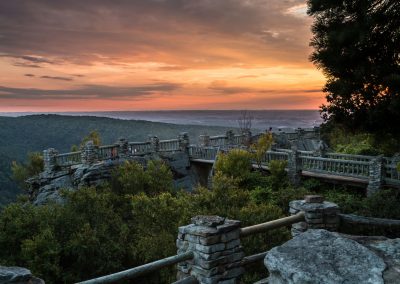
Wild & Wonderful Country Fest
South , Music
A Celebration of Appalachian Life and West Virginia!! When: August 21 – 22, 2020 Where: ...
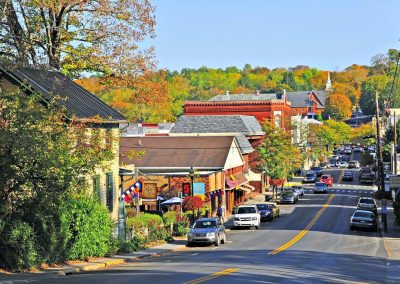
A Day in Lewisburg, WV
Blog , South , Small Town Spotlight
Lewisburg is a charming small town nestled in the Greenbrier Valley of West Virginia. We think ...
About Check-it-Off Travel
We are a Stamford, Connecticut-based travel advisory service focused on assisting individuals and business professionals with travel ideas and curated itineraries for US travel. Our database is organized exactly the same as our online travel guide and consists of over 100,000 items to consider on your next trip. We can also share with you over 10,000 major annual events that take place in over 2,500 cities and small towns across the country. Our goal is to match your travel style, interests, and budget to an amazing US travel experience.

Privacy Overview
Necessary cookies are absolutely essential for the website to function properly. This category only includes cookies that ensures basic functionalities and security features of the website. These cookies do not store any personal information.
Any cookies that may not be particularly necessary for the website to function and is used specifically to collect user personal data via analytics, ads, other embedded contents are termed as non-necessary cookies. It is mandatory to procure user consent prior to running these cookies on your website.
- 203-698-5560
- [email protected]
Request a Sample Itinerary
- First Name *
- Last Name *
- Phone Number
- Autumn Weekend in Southwest Colorado
- Experience New England
- Family Summer Vacation
- San Francisco Business Trip
- Name This field is for validation purposes and should be left unchanged.
Museums & Historic Sites
- When visiting a major city, don’t shy away from a museum even if you’re not a museum buff. The collections at major museums have so much more than paintings that you will still enjoy your visit.
- Balance is ideal when traveling. Make sure to consider some of the smaller museums in the area.
- Check the museum website before you visit. Take the museum highlight tour or a behind-the-scenes tour. These usually only last an hour and often become a favorite part of our clients’ visits.


Distilleries
Theaters & music venues.
- Purchase your tickets before your trip. Save money on fees when you buy tickets directly from venues.
- Plan a road trip around a summer music festival. It’s a great way to see many fantastic bands perform, all at the same venue.
- Most major cities have a theater district or fine arts center featuring theatrical productions, ballets, symphonies, and opera. Check the local entertainment websites to see if anything interests you.
- Don’t shy away from staying at a casino resort if you don’t gamble. The top casino operators attract gaming guests with their excellent services, great restaurants, live entertainment, and amenities that aren’t available at the average resort hotel.
- Due to their size and amenities, casino resorts attract conventions. It can be underwhelming to stay at a resort when 99 percent of the guests are there for business and you’re there for pleasure. Check with the hotel about ongoing events before you book.
- You may be able to get discount tickets to shows, attractions, and other entertainment options through your hotel. Check with the concierge if there are any perks for overnight guests.
- Lodging is one of the most significant expenses of any trip. Consider the total cost as you budget your trip don’t forget about parking and other daily fees. There are many perks to staying in a hotel located close to major attractions and public transportation.
- Before booking your lodging, determine the amount of time you will be in the hotel. This should be a major factor when choosing a property.
- Destination hotels and resorts can offer enough activities to fill an entire weekend. Think about planning a day to explore the hotel and take advantage of the amenities and activities included in your daily rate.
Restaurants
- Consider a quick stop at a coffee shop or bakery in the morning if you have a long day of exploring ahead. Getting a quick start will help you avoid long lines. Eat an early lunch to stay ahead of the crowds.
- Breakfast buffets and full-service fine dining can break your travel budget. Don’t shy away from quality food but look at all your options if you’re trying to avoid overspending.
- If you are a foodie, research the “must try” eateries along with new spots earning rave reviews. We will let you know if there is a James Beard award winning restaurant in the area.
- Expect an abundance of independent retail stores in our curated list of small town shopping destinations. For instance, if you are visiting a village settled by Swiss immigrants, there are sure to be Swiss gift shops selling remarkable products imported from Europe.
- We encourage you to purchase something local on each of your trips. You will have built an impressive collection of items and memories after a few years of traveling.
- Store hours vary by the day of the week and time of year. Don’t expect stores to be open every day in the off-season. Your best bet is to use part of the weekend to shop in between sightseeing.
Tours & Experiences
- Book a history tour of the city or town you’re visiting for the first day you arrive. You will learn about the area, get the lay of the land, and learn valuable local knowledge from your tour guide.
- With so many tour options to choose from, sometimes the adage “You get what you pay for” is accurate. Check online reviews before booking the tour.
- Confirm the tour company’s name, meeting time and location, and the travel time to arrive at the meeting point. All too often tours are missed due to a misjudgment of travel time or unexpected traffic en route. Aim to be early.
Religious Sites
- Visit a historic cemetery and learn more about the gravestones. Take a guided tour to discover prominent figures interred on-site. Visit a historic cemetery and learn more about the gravestones.
- States that border Mexico have architecturally significant and truly amazing missions. Depending upon your interests and schedule, you can take a self-guided tour or book a guided tour of one or more mission complexes.
- Most places of worship have guided tours available on the weekends, typically in the afternoons. Spend an hour learning about an iconic place of worship to immerse yourself in the history of the building and its members.
- Stopping at a landmark is the perfect reason to take a break from driving and stretch your legs. Spend a little time outside the car snapping a few photos before resuming your travels.
- The landmarks we feature are typically open during daylight hours from sunrise to sunset, unless they are in a park or managed area.
- There are many landmarks in major cities, especially historically significant ones. You can easily spend an entire day just visiting famous landmarks.
Let’s Keep in Touch!
Receive a custom itinerary featuring lodging, attractions, restaurants, unique shopping, tours and experiences that suit your travel style and budget.
Each itinerary will include additional options to consider while traveling. You will not have a shortage of things to do, places to eat and lodging choices.
The final itinerary will be available in both downloadable format, as well as loaded into your daily calendar for quick reference while traveling.
If we make reservations for you, all confirmations and important details will be attached to the itinerary.
Premium Travel Planning
(includes all Custom Travel Features and these added Concierge)
Concierge service available from 7am EST to 7pm PST.
Daily travel assistance for Check-it-Off Travel clients.
Quickly change your existing custom itinerary.
Assist with new reservations during your trip.
Work with you to alleviate any stress caused by travel delays.
The Bunker Tour at The Greenbrier
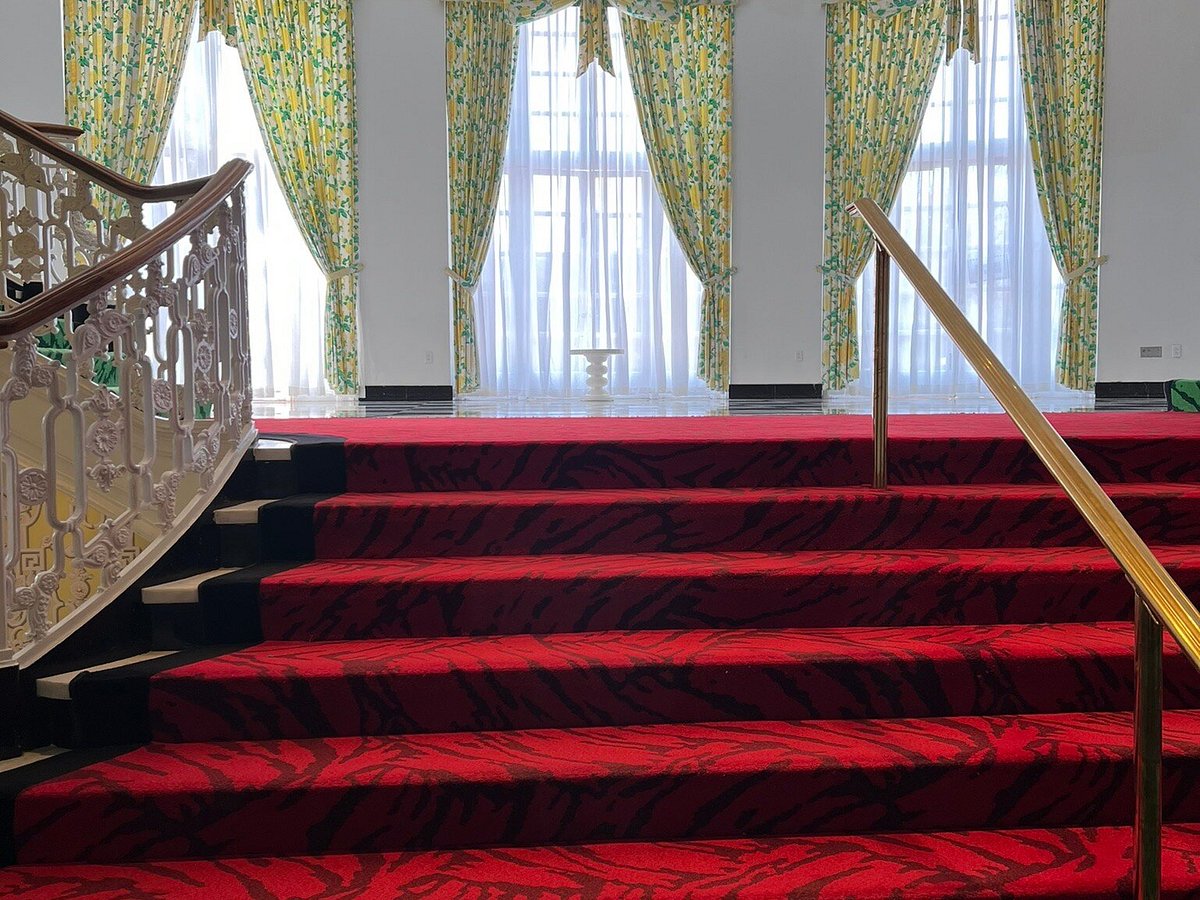
- See all photos

Similar Experiences

Most Recent: Reviews ordered by most recent publish date in descending order.
Detailed Reviews: Reviews ordered by recency and descriptiveness of user-identified themes such as wait time, length of visit, general tips, and location information.
The Bunker Tour at The Greenbrier - All You Need to Know BEFORE You Go (2024)

National Museum of Nuclear Science & History
Greenbrier Bunker
- Cold War History

One of the great vestiges of the Cold War is the Greenbrier bunker, a facility built to house all 535 members of Congress in the event of a nuclear attack.
Construction
In 1955, Dwight D. Eisenhower instructed the Department of Defense to draft emergency plans for Congress in case of a nuclear strike. Even if Washington, DC was destroyed, American officials needed a procedure to maintain the continuity of government. As part of these efforts, the Army Corps of Engineers was charged with scouting the location of a nuclear bunker for the members of Congress. They ultimately selected the Greenbrier, a luxury resort in White Sulphur Springs, West Virginia.
Greenbrier was chosen because of its location — relatively close and accessible to Washington, but far enough away to be safe from an atomic bomb — and because of its prior relationship with the United States government. During World War II, Greenbrier had served as an internment facility for Japanese, Italian, and German diplomats and then as a military hospital, where Eisenhower himself was at one time a patient. Although it returned to its original function as a hotel after the war, government officials occasionally held conferences at Greenbrier.
Construction on the bunker began in 1957. Government officials tried to hide the secret project by announcing the construction of Greenbrier’s “West Virginia Wing.” Construction workers and locals were suspicious, however, particularly about the sheer volume of concrete that was poured for the project. As construction worker Randy Wickline recalled, “Nobody came out and said it was a bomb shelter, but…they weren’t building it to keep the rain off them. I mean a fool would have known.” Truman Wright, the manager of the Greenbrier resort from 1951-1974, likewise remembered a contractor asking, “This is an exhibit hall? We’ve got 110 urinals we just installed. What in the hell are you going to exhibit?”
The $14 million project was completed on October 16, 1962, just before the start of the Cuban Missile Crisis. Originally codenamed Project X, the bunker was also known as Project Caspar and, during the 1980s, as Project Greek Island.
Inside the Bunker
The Greenbrier bunker is buried 720 feet underground. It would not survive a direct nuclear strike, but is capable of weathering a blast 15-30 miles away and protecting its occupants from fallout. The two-level facility is 112,544 square feet, roughly the size of two football fields on top of one another.
The bunker has four doors, all made by the Ohio-based Mosler Safe Company and shipped to Greenbrier by railway. The two largest, known as GH 1 and GH 3 and weighing 28 and 20 tons respectively, require 50 pounds of force to open. Once sealed, the bunker would have had enough air to last 72 hours, after which a ventilation system would filter air from the outside.
Although most of the bunker was a closely guarded secret, its largest halls — intended for sessions of Congress — were actually part of the Greenbrier hotel and would have been sealed off only in the event of an attack. The largest, Exhibit Hall, was designed to host joint sessions of Congress. A Greenbrier brochure from the 1960s advertised the hall to guests: “The floor is finished with a beautiful plastic terrazzo designed to support unlimited weight.” Just off of Exhibit Hall are two smaller auditoriums: the 440-seat Governor’s Hall, intended for the House of Representatives, and the 130-seat Mountaineer Room, which would have hosted members of the Senate.
A hidden passage, marked by a door which reads, “Danger: High Voltage Keep Out,” leads to the rest of the bunker. In the event of an attack, congressmen would have first been ushered to the decontamination room, where they would have stripped, showered, and put on uncontaminated clothes. The dormitories consist of 18 rooms, each built to house 60 people in metal bunk beds. There is also a kitchen and a 400-seat cafeteria, which was at one point decorated with fake windows featuring scenic views. The upper level contains storage space and offices for congressional leaders.
Among other interesting features, the bunker’s power room includes a “pathological waste incinerator” designed to cremate bodies. The Congressional Record Room, in addition to holding files, houses the only weapons in the facility: a relatively modest collection of rifles, pistols, nightsticks, and helmets — essentially riot gear. The bunker also has a hospital, operating room, and pharmacy, which once kept a plentiful supply of antidepressants. According to journalist Paul Lieberman , the bunker maintained “a tiny jail with two boxes of straitjackets” just in case “congressmen went bonkers.”
Perhaps the most interesting feature of the bunker is the vast television, radio, and communications facilities. In the event of an attack, congressmen would have been expected to give speeches broadcast to whatever was left of the American population. The TV conference room even includes a backdrop of the Capital Building, giving the illusion of normalcy.
Preparing for Doomsday
After its construction, the Greenbrier bunker was maintained by 12-15 permanent government employees who worked undercover as members of an Arlington-based television repair company called Forsythe Associates. According to Paul Fritz Bugas , the former superintendent of the bunker, the government workers at Greenbrier spent about 20% of their time doing TV work for the hotel, with the remainder devoted to bunker maintenance.
Among other supplies, the bunker was provided with enough food for 1,000 people to last 60 days. Government employees also had to constantly update their plans based on who the current members of Congress were. “For 30 years, every one of these 1,100 beds was assigned to somebody,” explained Greenbrier historian Bob Conte . “For that 30 years you had to make sure all the filters were changed, all the pharmaceuticals were up-to-date, and all the food was ready to go.”
The actual procedure for bringing congressmen to the bunker remains somewhat unclear. Greenbrier is a five hour drive or a one hour flight (the local airport was expanded in 1962) from Washington, so it would have required advance warning of an attack to bring all 535 members of Congress. Almost no members were aware that the bunker existed––only the leadership was ever briefed. Former Speaker of the House Tip O’Neill recalled , “I never mentioned [the evacuation plan] to anybody. But every time I went down to the Greenbrier I always used to look at the hill and say, ‘Well that’s where we’re supposed to live in the event something happens, and that’s where we’re going to do business, maybe under the tennis courts.’”
There remains some ambiguity on whether congressmen would have been allowed to bring their families to the bunker. O’Neill recalled being told that he could not bring his family, commenting, “I kind of lost interest in it when they told me my wife would not be going with me.” Paul Fritz Bugas, however, maintained that there were plans to expand bunker facilities in order to accommodate families, although it is unclear if or when this project ever occurred.
The Greenbrier Bunker Today
The bunker remained a closely guarded secret until 1992, when Washington Post reporter Ted Gup revealed its existence in his article, “The Ultimate Congressional Hideaway.” Given that its secure location was one of the primary guarantees for its defense, the bunker was quickly decommissioned. Bugas was critical of the article, explaining, “We felt a disservice had been done. I’m not talking to us personally, but to our country’s security.” Gup, however, argued that by 1992 the bunker was essentially obsolete : “The bunker was built when bombers took hours to go over the polar ice caps. The warning time was many hours. We’re now talking minutes, if not less.”
In 1995, the Greenbrier resort began offering tours of the bunker to its guests. In 2006, the tours were expanded to the general public. Tours are still offered today , but no cameras are allowed inside the bunker.
There is speculation that the U.S. government has built a new bunker for Congress since the existence of the Greenbrier bunker was revealed in 1992. If there is such a bunker, very few people know about it. As Bill Arkin of the Washington Post commented , “If you’re a normal member of Congress, my guess is that you know nothing. You really know nothing.”
“Virtual Shelter Tours: Congressional Relocation Bunker, Greenbrier Resort, West Virginia.” Civil Defense Museum. http://www.civildefensemuseum.com/greenbriar/index.html
- Skip to global NPS navigation
- Skip to the main content
- Skip to the footer section

Exiting nps.gov
The greenbrier goes to war.

Public domain. Courtesy of the National Library of Medicine.
The Greenbrier is a luxurious resort located in rural West Virginia, established in the early 19th century. During World War II, The Greenbrier “went to war” for the United States, serving as an internment center for enemy diplomats, a general hospital for US troops, and a Cold War-era bunker location.
The town of White Sulphur Springs in West Virginia has long been known for its restorative properties. The first recorded guest at the springs “taking the waters” for their health was in 1778, and people are still enjoying them into the 21st century. Today, a historic dome houses the springs, and the vast estate of The Greenbrier surrounds it.
Days after the attack on Pearl Harbor on December 7, 1941, the United States Government leased the hotel to house “enemy alien diplomats”. They hoped that relocating the diplomats to high-quality internment centers would inspire Axis nations to treat US diplomats similarly. German, Italian, and Japanese diplomats and their families were held for seven months. In the summer of 1942, the government released these diplomats in exchange for United States diplomats detained overseas.
At the onset of World War II , the United States military knew the country’s existing hospitals would not have enough beds or staff to properly serve the armed forces. Military officials set out to identify buildings that they could turn into hospitals. Large hotels fit this goal well, because they had many guest rooms and event spaces that could be quickly transformed into medical facilities. In September 1942, the United States Army purchased The Greenbrier hotel and 7,000 acres of surrounding ground for $3.3 million.
Workers began soon after to turn the luxury resort into a functional Army hospital. Guest rooms transformed into utilitarian patient rooms. Some of the larger rooms retained their more elegant features. These rooms served as recreational facilities for the soldiers. The hotel was renamed Ashford General Hospital, after Army physician Colonel Bailey K. Ashford. Colonel Ashford was known for his malaria research and for founding the School of Tropical Medicine in Puerto Rico. [1]

On November 14, 1942, Ashford General Hospital received its first patients. The converted hotel had a 2,025-bed capacity. The hospital specialized in neurology, vascular surgery, and neurosurgery. It employed hundreds of military staff and over 500 civilians. Many Red Cross volunteers and West Virginians also visited Ashford to ensure that the service members had a comfortable and speedy recovery.
Due to the labor and workforce shortage, 1,000 German prisoners of war maintained the grounds and buildings from 1943 to 1945. These POWs lived at nearby Camp Ashford, a former Civilian Conservation Corps camp located at White Sulphur Springs.
Soldiers were also able to use the grounds for rehabilitation and recreational purposes. Service members had access to all the former resort’s recreation facilities. These included a swimming pool, tennis courts, hot springs, and the estate’s famous golf course. Dances with live entertainment were also held every month.
Between 1942 and 1946, the hospital treated 24,148 soldiers. Notable patients included General Omar Bradley and future president General Dwight D. Eisenhower . After the last patients left in 1946, The Chesapeake and Ohio Railway repurchased The Greenbrier. The resort was restored and decorated by a well-known interior designer, Dorothy Draper, before reopening to the public.
In 1957, the government renewed its lease with the Greenbrier to build a secret bunker underneath the hotel. In the event of a nuclear attack on the capital, all 535 members of Congress would evacuate to this location. This ensured that the government could continue to function after an attack. The Greenbrier was a desirable location because it was close enough to the capital for a quick evacuation, but far enough away to be safe from an attack on Washington, DC.
The bunker was completed in 1962. Located 720 feet below ground, it contained everything Congress needed to live and work indefinitely. The bunker remained secret until its existence was exposed in a 1992 Washington Post article. In 1995, the US Government ended its lease with the Greenbrier, and the hotel started offering tours of the bunker shortly after.
The resort is still a well-known and luxurious destination for travelers. Visitors can view the historic architecture and furnishings of the hotel and tour the declassified Cold War era bunker. The Greenbrier was added to the National Register of Historic Places on October 9, 1974. It became a National Historic Landmark on June 21, 1990. The Greenbrier is also a part of the Appalachian Forest National Heritage Area , which was designated in 2019.
The content for this article was researched and written by Hannah Haack, an intern with the Cultural Resources Office of Interpretation and Education and the Park History Program.
[1] The School of Tropical Medicine was listed in the National Register of Historic Places and designated as a Puerto Rico Landmark in 1983. [NRHP 83002297 ]
Bibliography
Atomic Heritage Foundation. “Greenbrier Bunker.” History. July 18, 2018. https://www.atomicheritage.org/history/greenbrier-bunker . Conte, Robert S. "The Greenbrier." e-WV: The West Virginia Encyclopedia . Charleston: West Virginia Humanities Council, 2013. Accessed June 1, 2022. https://www.wvencyclopedia.org/articles/42 . e-WV: The West Virginia Encyclopedia . “Camp Ashford.” Charleston: West Virginia Humanities Council. Accessed July 11, 2022. https://www.wvencyclopedia.org/print/Article/819 . The Greenbrier. "History Timeline." About Us. Accessed June 2, 2022. https://www.greenbrier.com/About-Us/History.aspx . Harding, James E. and C.E. Turley. “The Greenbrier.” National Register of Historic Places Inventory/Nomination Form. West Virginia Antiquities Commission, May 16, 1974. https://catalog.archives.gov/id/86535069 . Keefer, Louis E. "Ashford General Hospital." e-WV: The West Virginia Encyclopedia . Charleston: West Virginia Humanities Council, 2019. Accessed June 1, 2022. https://www.wvencyclopedia.org/articles/304 . Smith, C. M. K. The Medical Department: Hospitalization and Evacuation, Zone of Interior . United States Army in World War II: The Technical Services. Washington, DC: U.S. Government Printing Office, 1989. https://history.army.mil/html/books/010/10-7/CMH_Pub_10-7.pdf . Solomon, Harvey. “When the Greenbrier and other Appalachian Resorts Became Prisons for Axis Diplomats.” Smithsonian Magazine , February 21, 2020. https://www.smithsonianmag.com/travel/when-greenbrier-other-appalachian-resorts-became-prisons-for-axis-diplomats-180974243/ .
You Might Also Like
- world war ii
- wwii home front
- world war ii home front
- west virginia
- military history
- disability history
- waso park history program
Last updated: May 1, 2023
- Skip to main content
- Skip to secondary menu
- Skip to primary sidebar
- Skip to footer

Nutty Hiker Adventures
Hike Every Hike Like It Is Your Last
The Greenbrier – Project Greek Island – The Bunker
June 13, 2023 by Nutty Hiker Last Modified: June 9, 2023 Leave a Comment
Did you know that there is a former top secret government relocation facility (aka bunker) at The Greenbrier Resort in West Virginia?
History of the Greenbrier Resort
Staying at the greenbrier, touring the greenbier, greenbrier photo gallery, project greek island – the bunker, history of “the bunker”, bunker tour information.
Opened in 1778, The Greenbrier – America’s Resort (formally known as the White Sulpher Spring) is located on 11,000 acres with a guest list that includes 28 U.S. Presidents, countless celebrities, sports figures, business leaders, and even royalty.
In fact, when I visited, the San Fransisco 49ers were there (yes, the entire team). I am a diehard Dallas Cowboys fan, so their being there didn’t impress me much =)
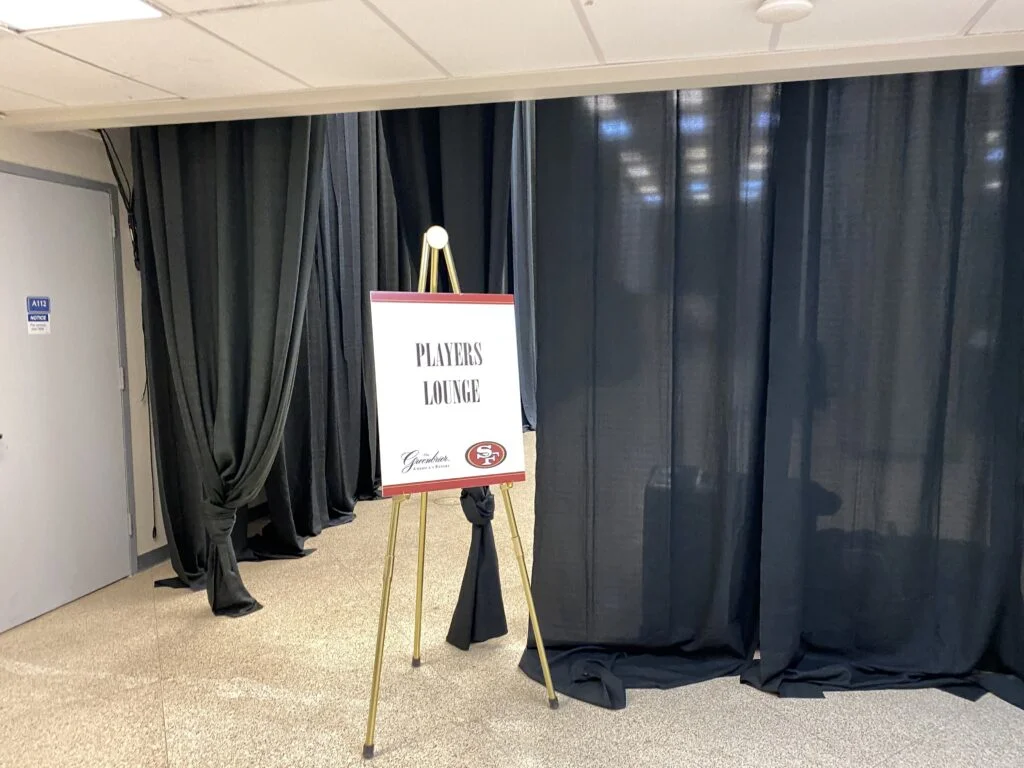
Originally, guests would come to “take the waters” at White Sulpher Spring to restore their health. It wasn’t long before prominent figures made their way to The Greenbrier to escape the summer heat and humidity.
During the Civil War, The Greenbrier was closed down and both sides used the grounds as either a military hospital or headquarters.
After the Civil War, in the early 1900’s the Chesapeake and Ohio Railway purchased the historic resort property and added The Greenbrier Hotel, a new Mineral Bath Department, and an 18-hole golf course.
In 1914, the White Sulpher Spring was renamed to The Greenbrier and was opened year around.
The U.S. Army bought and transformed the hotel into Ashford General Hospital. At this 2,000-bed medical facility, 24,148 soldiers received surgical and rehabilitation care over four years before it was reacquired by the C&O Railway.
The 1950s is where The Greenbrier’s history gets fascinating. The U.S. government asked the Greenbrier to construct an Emergency Relocation Center, known as Project Greek Island.
For a more in-depth history, see their website .
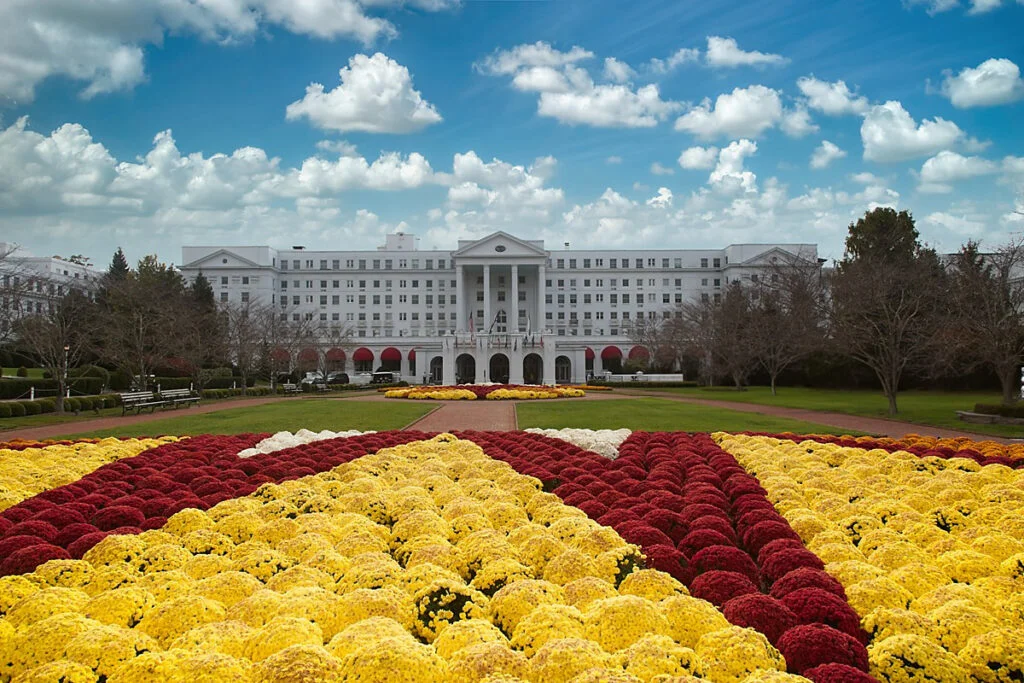
Want to feel like a celebrity for a night, you can book a room and at the time of publication, the cheapest room I could find was $408 a night (before all the added fees and taxes). They also have a dress code, just FYI.
The Greenbrier does offer over 55 different activities , and has its own retail shopping center, casino, restaurants, world-class golf course, spa, and what seems to be a million other amenities. It’s like its own little city.
Can’t afford to stay a night? No worries, you can do a self-guided tour, eat in their restaurants, and spend money in their shops. No reservation required =). See pictures from my visit below.
I had such a wonderful time capturing these images. The inside of The Greenbrier is just absolutely stunning. It was like stepping back in time. Everything is just so elegant. You can quickly tell why it is so popular with celebrities and the rich & famous.

It was so fascinating to be able to tour Project Greek Island. I wish I had photos to show you, but you are forced to put ALL of your belongings in lockers before the tour starts (yes, you even have to empty your pockets).

The only picture you can take is of the Blast door, a large steel and concrete door designed to withstand a modest nuclear blast from 15-30 miles away. If you look closely at the wall next to the door, there is a picture showing what it looks like when they would conceal it back in the day. You would never know there was a massive bunker door hiding there.
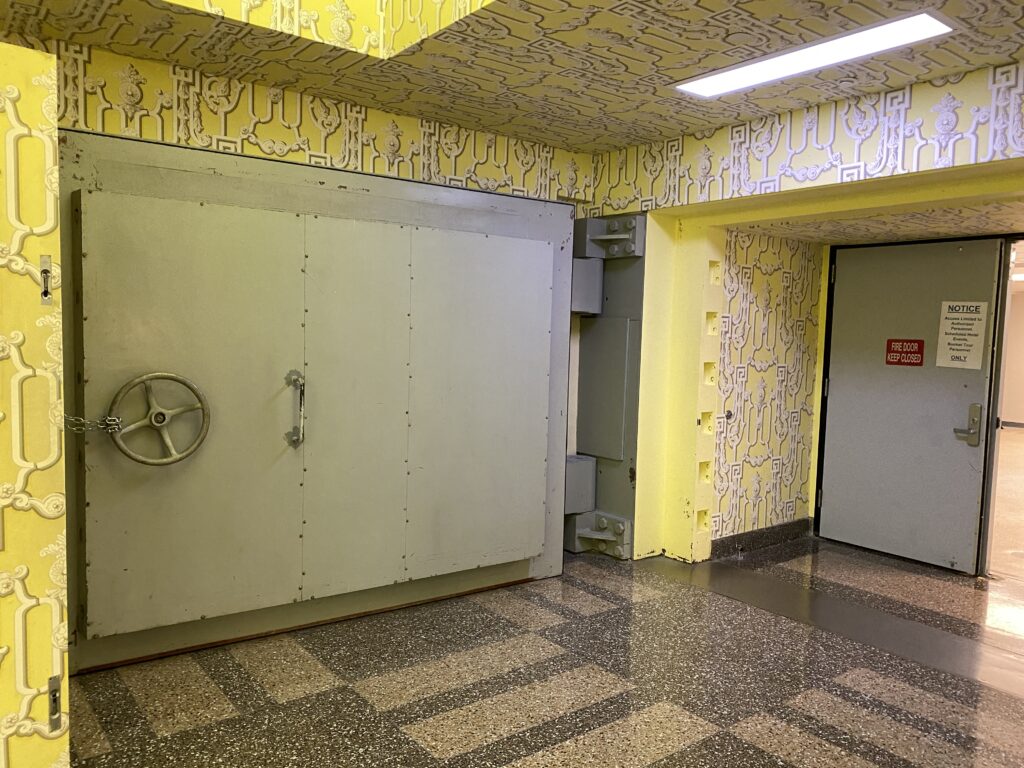
Project Greek Island was created for Congress to use as a safe haven during war and was built as an underground facility. The West Virginia Wing, an above-ground addition, was also constructed alongside the bunker to hide the construction.
It took three years to build The Bunker under the Eisenhower Administration and once completed it was maintained in a constant state of readiness by a small cadre of government employees who worked undercover for 30 years until 1992 when the project was terminated and the bunker decommissioned due to exposure by a Washington Post story .
Reservations are required and tours last approximately 90 minutes (oh and it is WELL WORTH IT!). You get to visit almost all areas of the Bunker as your tour guide gives you a very in-depth history lesson. I am not going to go into everything here, because you really need to experience it yourself. But, some of the areas you get to explore are the west tunnel entrance, power plant, communications briefing room, dormitories, dispensary/clinic, cafeteria/kitchen, and exhibit hall/meeting rooms.
Pricing Adults: $40 per person Youth (10-18): $20 per youth (children under 10 are not allowed)
Know Before You Go
- Maximum tour size is 25 persons.
- No one under the age of 10 is permitted.
- No cameras, electronic equipment, cell phones, items of concealment such as backpacks, tote bags, purses, etc., or weapons are permitted. They do have shared lockers you can store your belongings in and by shared, I mean you have to share the locker with others in the group who may not be in your party.
- While there is a dress code for those staying at the hotel, the tour has no dress code. Comfortable shoes are recommended. If you plan on doing any other activities at the resort you will need to check the dress code for that specific activity.
Click here for more information and reservations or call (855) 453-4858.
Have you been to The Greenbrier and visited The Bunker? Leave a comment below and let me know what you think!
Reader Interactions
Leave a comment or suggestion cancel reply.
Your email address will not be published. Required fields are marked *
AWARDS/ASSOCIATIONS

The Greenbrier
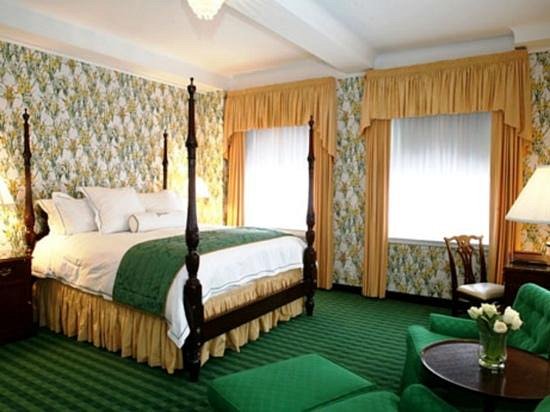
View prices for your travel dates
- Excellent 2,240
- Very Good 706
- Average 385
- Terrible 154
- All languages ( 3,678 )
- English ( 3,669 )
- Spanish ( 4 )
- German ( 3 )

" Don't dress like a tourist at Disney World. This is an elegant destination. "

" Skip valet parking. Self parking is just a short walk away. "

" Do the bunker tour!!! "
" Make dinner reservations when you make your room reservation. Some restaurants require them and they get booked up quickly. "
" Cant get into restaurants, so book early or order to go. "
Own or manage this property? Claim your listing for free to respond to reviews, update your profile and much more.
THE GREENBRIER (White Sulphur Springs) - Resort Reviews & Photos - Tripadvisor

Love Exploring
We've Tracked Down America’s Best Underground Attractions
Posted: March 10, 2024 | Last updated: March 10, 2024
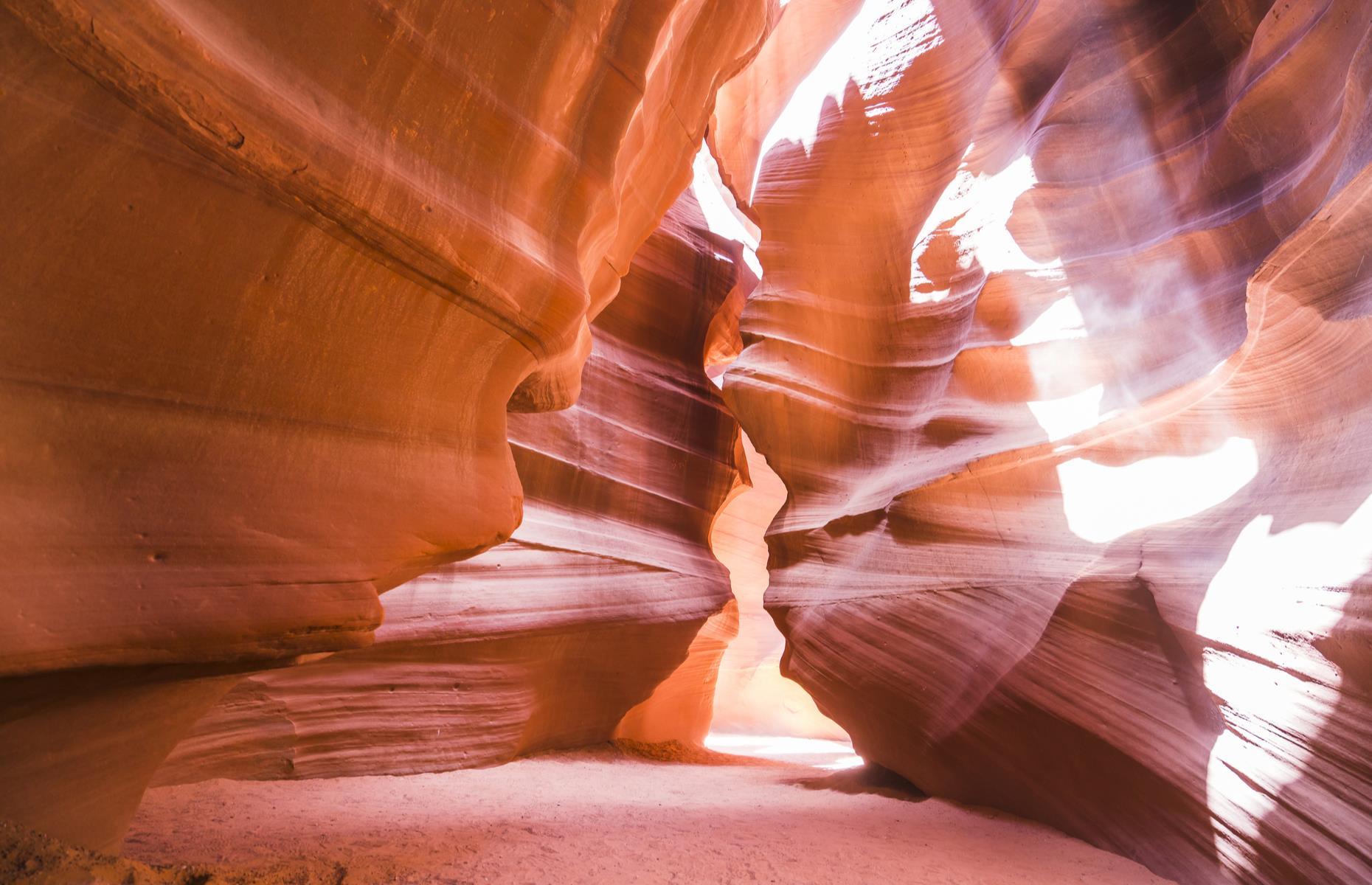
Going underground
America’s cities and scenery may be spectacular, but have you ever thought about what lies beneath? From labyrinthine caves and hidden towns to subterranean hot springs and even a zipline park, these cool attractions are all tucked away.
Read on to discover the most awe-inspiring underground experiences in the USA...
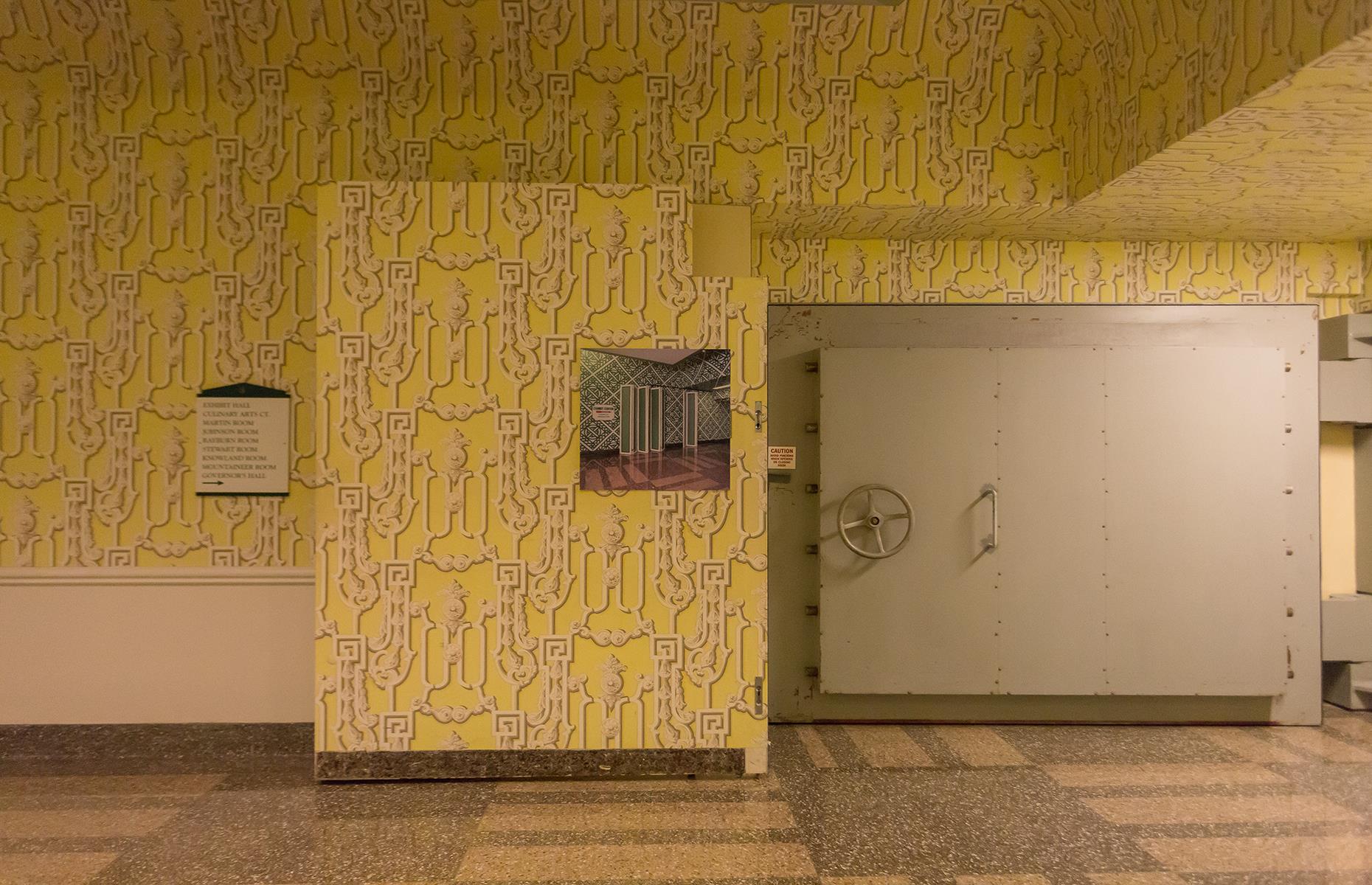
Greenbrier Bunker, West Virginia
Hidden beneath the West Virginia wing of the Greenbrier resort, behind 18-tonne blast-proof doors, is the Greenbrier bunker. It was built as a top-secret project in the late 1960s, to safeguard the US Senate in the event of nuclear war. Designed to house 1,100 people, the two-story building has bedrooms kitted out with bunk beds, decontamination showers, and its own power plant. Tours are available.
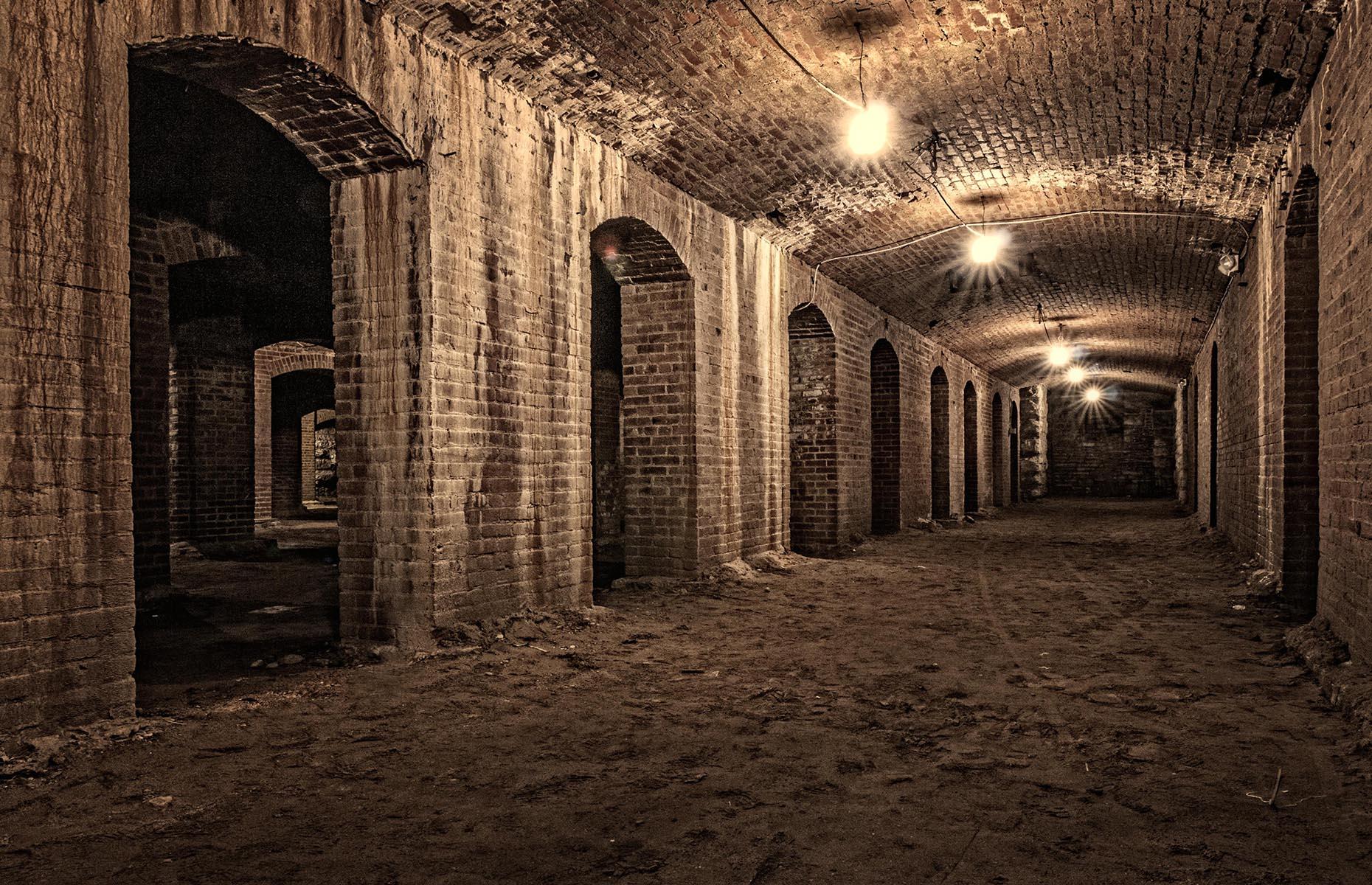
City Market Catacombs, Indiana
Delve beneath the buzzing cafés of City Market in Indianapolis and you'll find an eerily quiet network of catacombs, stretching for 22,000 square feet (2,044sqm). The limestone and brick arches and pillars were originally the basement of Tomlinson Hall, a vast municipal building that was demolished after a fire in 1958. An organized tour gives visitors the chance to explore the musty underground warren, which is popular with ghost hunters. However, the tours are currently suspended due to construction work around the City Market.
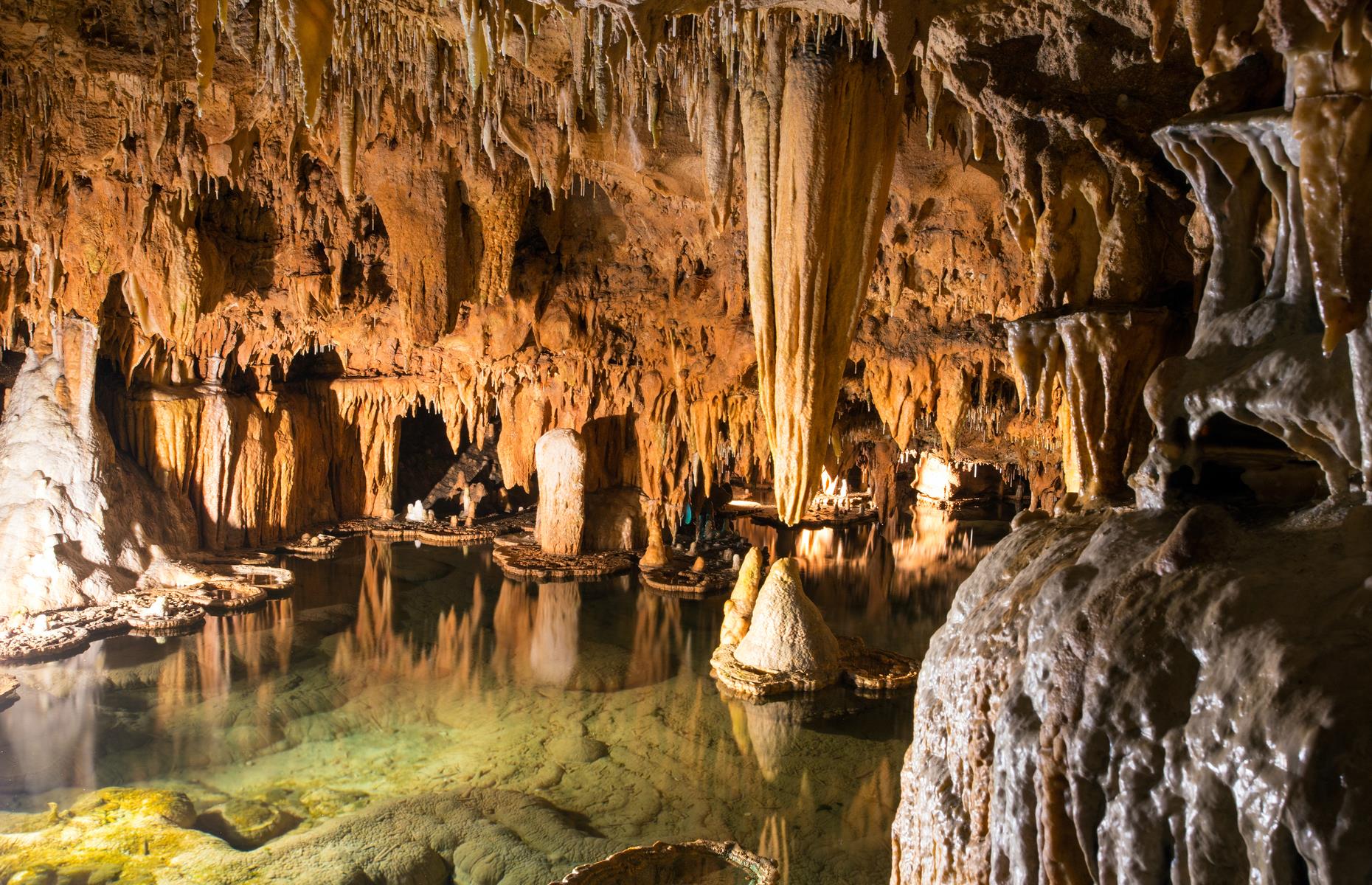
Onondaga Cave, Missouri
Deep in the belly of Onondaga Cave State Park sits Onondaga Cave, a subterranean world of spectacular stalactites and lofty stalagmites. The cave system includes the Lily Pad room, so-named for its lily-like calcite deposits, resting gently on a crystal clear pool. You can take a tour, but bring a jacket as it can get quite chilly no matter what time of year.

Dinosaur Caves, California
The San Luis Obispo County stretch of the Californian coast is home to a world of grottoes, arches, rock gardens, and caves. It's possible to explore their watery depths on a kayaking excursion – some of the caves run up to 30 feet (9m) deep. There are seals, otters, and dolphins around too.

Old Sacramento Underground, California
In 1861, Sacramento was hit by 45 days of powerful Pacific storms, which caused the rivers to surge through the town, sweeping thousands to their deaths. Instead of deserting their hometown, locals spent 15 years slowly raising the streets and houses by nine feet (2.7m). Today the Sacramento History Museum runs tours around some of the abandoned basements, alleyways, and underground streets.
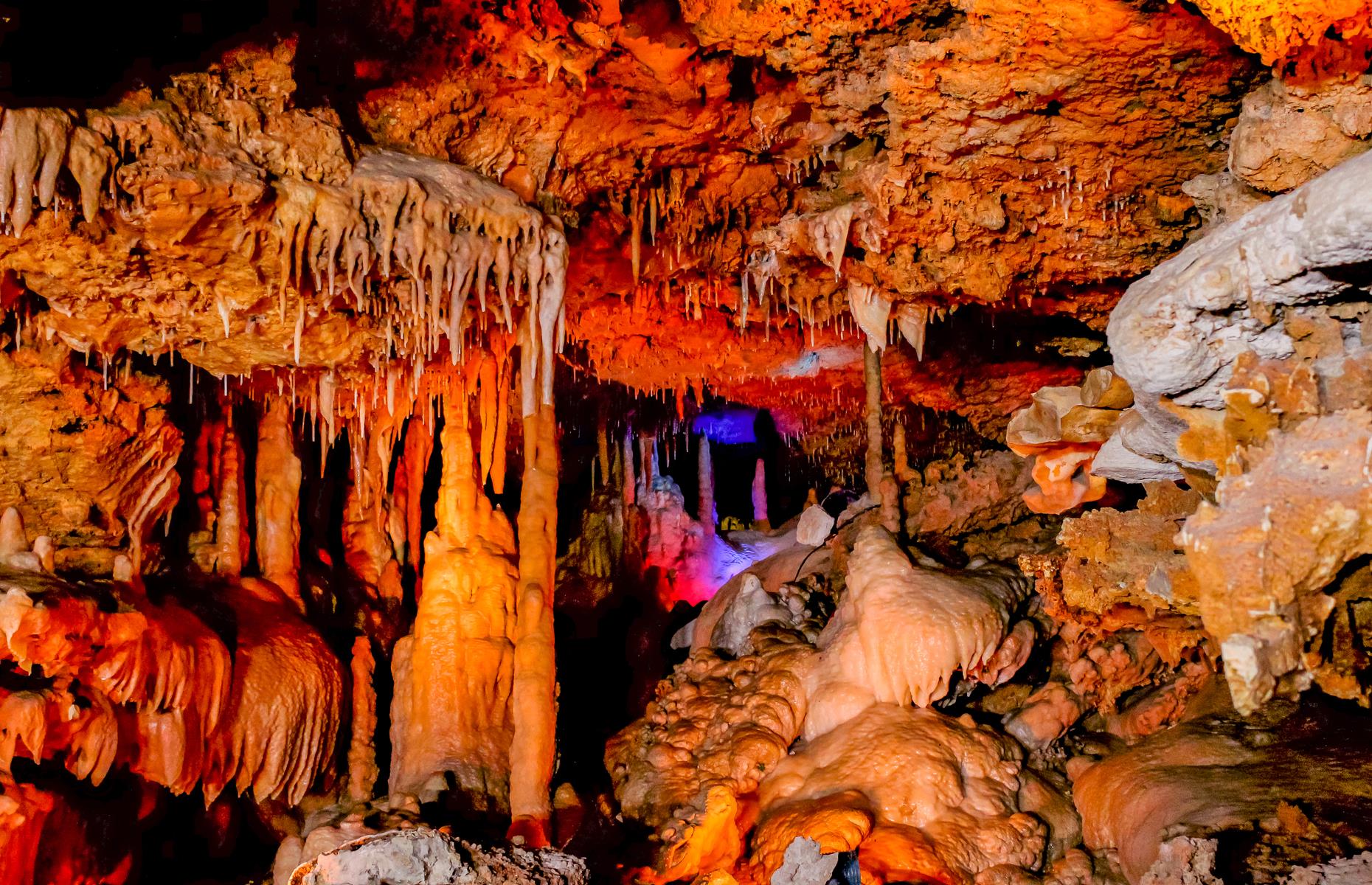
Inner Space Cavern, Texas
The Texas Highway Department stumbled across what's now known as Inner Space Cavern in 1963, when drilling through rock to test if it could support an overpass. When a drill fell through the roof of the Discovery Cave, the workers realized they were above a vast subterranean network of chambers, with sharp stalagmites, still pools, and even coral (this was once the ocean floor).
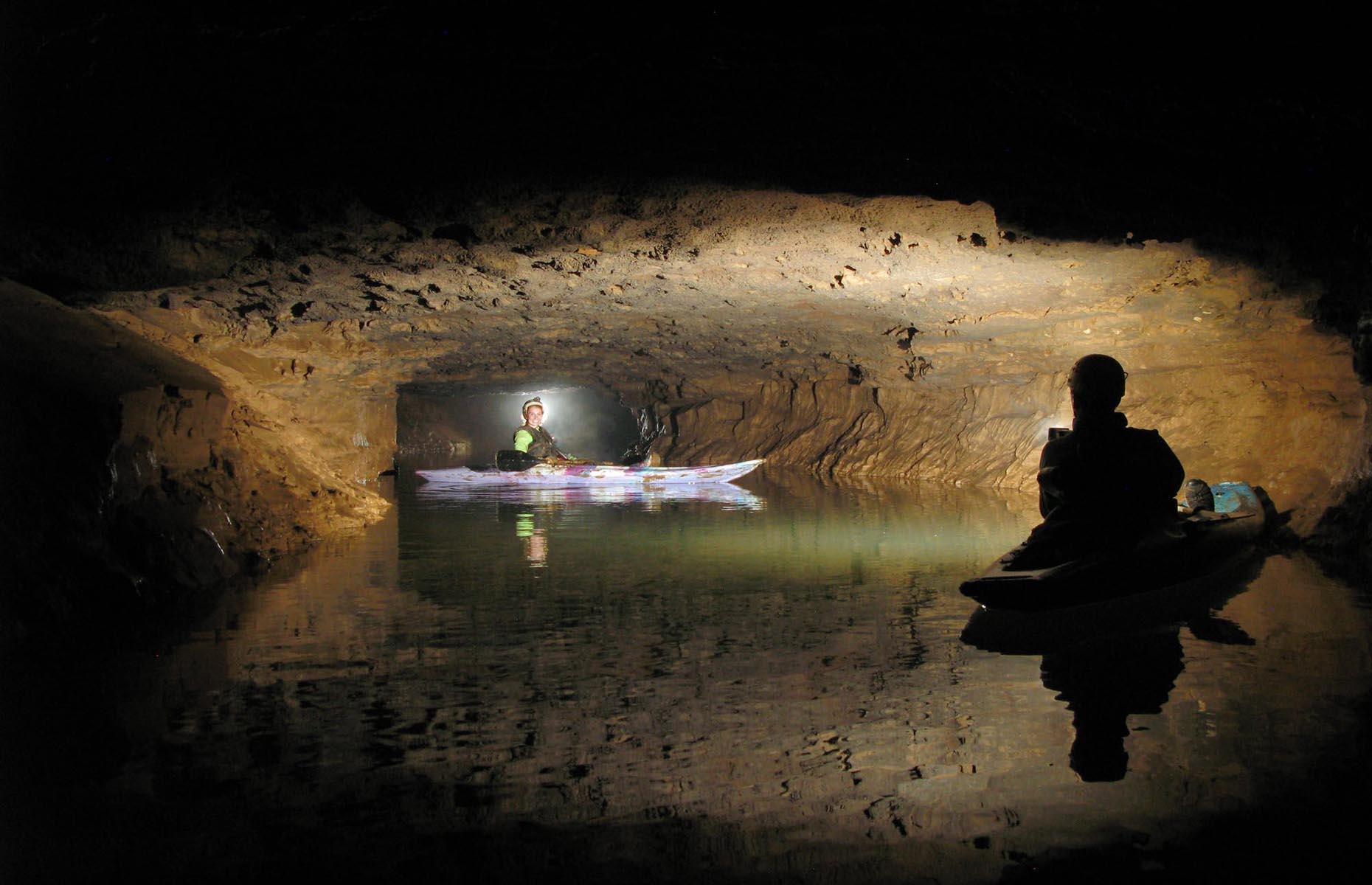
Indiana Caverns, Indiana
The Binkley Cave system opened to the public in 2013 as Indiana Caverns and holds the title of the longest cave in Indiana – it's also in the top 10 longest caves in America. Activities on offer include cave tours and kayaking on a subterranean river (look out for the cave crayfish).
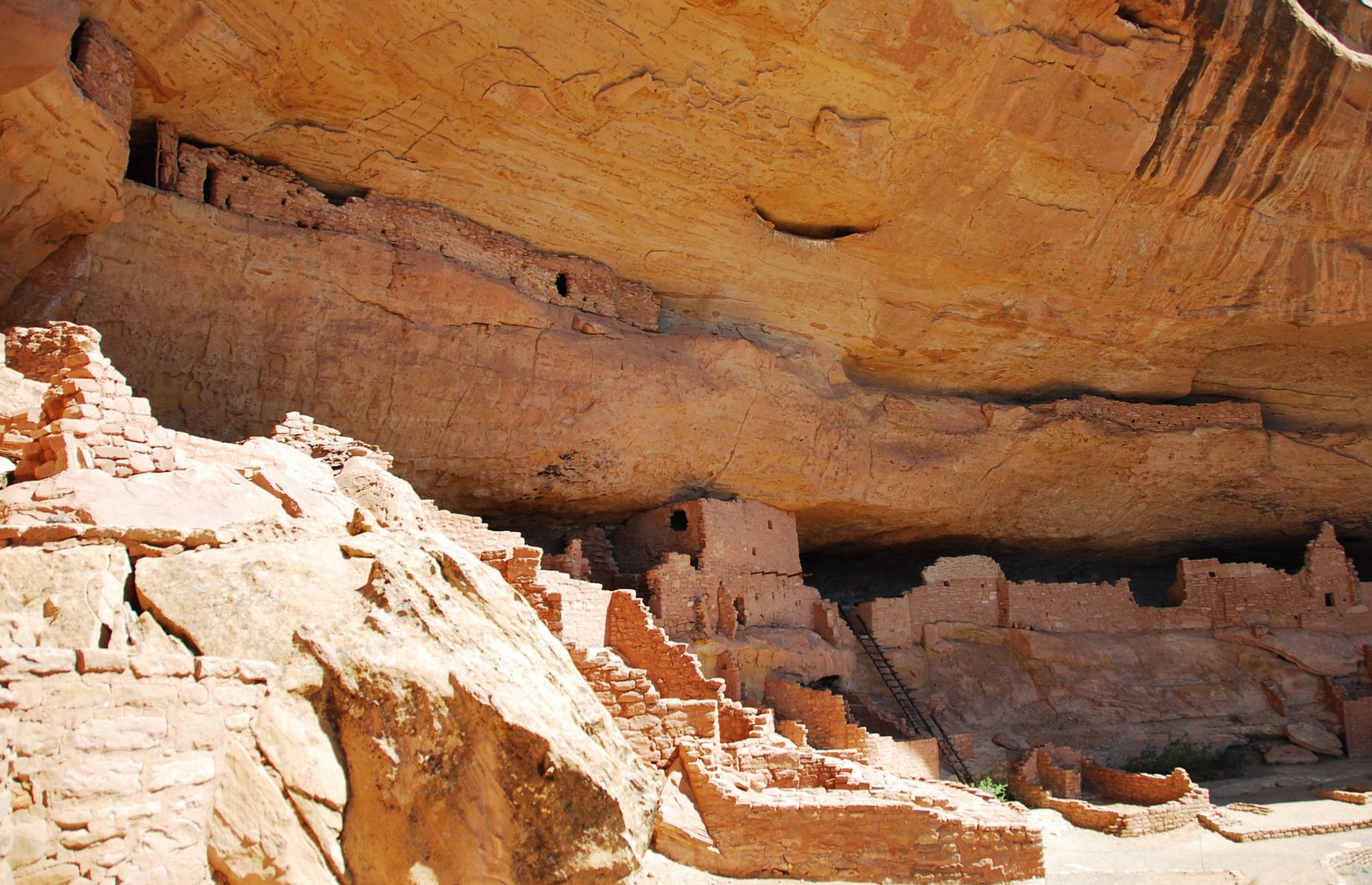
Wetherill Mesa, Colorado
Tucked beneath overhanging cliffs in Mesa Verde National Park are around 600 sandstone cliff dwellings, dating back some 820 years. These ancient villages were built by Ancestral Pueblo Indians who farmed the land above. You can access the unique structures in the Wetherill Mesa part of the park via self-guided or ranger-led tours.

Valley of Fire cave, Nevada
This rusty red cavern is only four feet (1.2m) wide and deep, but its vibrant color and otherworldly rock formations certainly pack a punch. Tucked away down a dirt track in Nevada’s Valley of Fire State Park, the sandstone rock has slowly been eroded by wind, forming the Windstone Arch and alien-like shapes. If you want to see it for yourself, check the GPS coordinates as it isn’t easy to find.
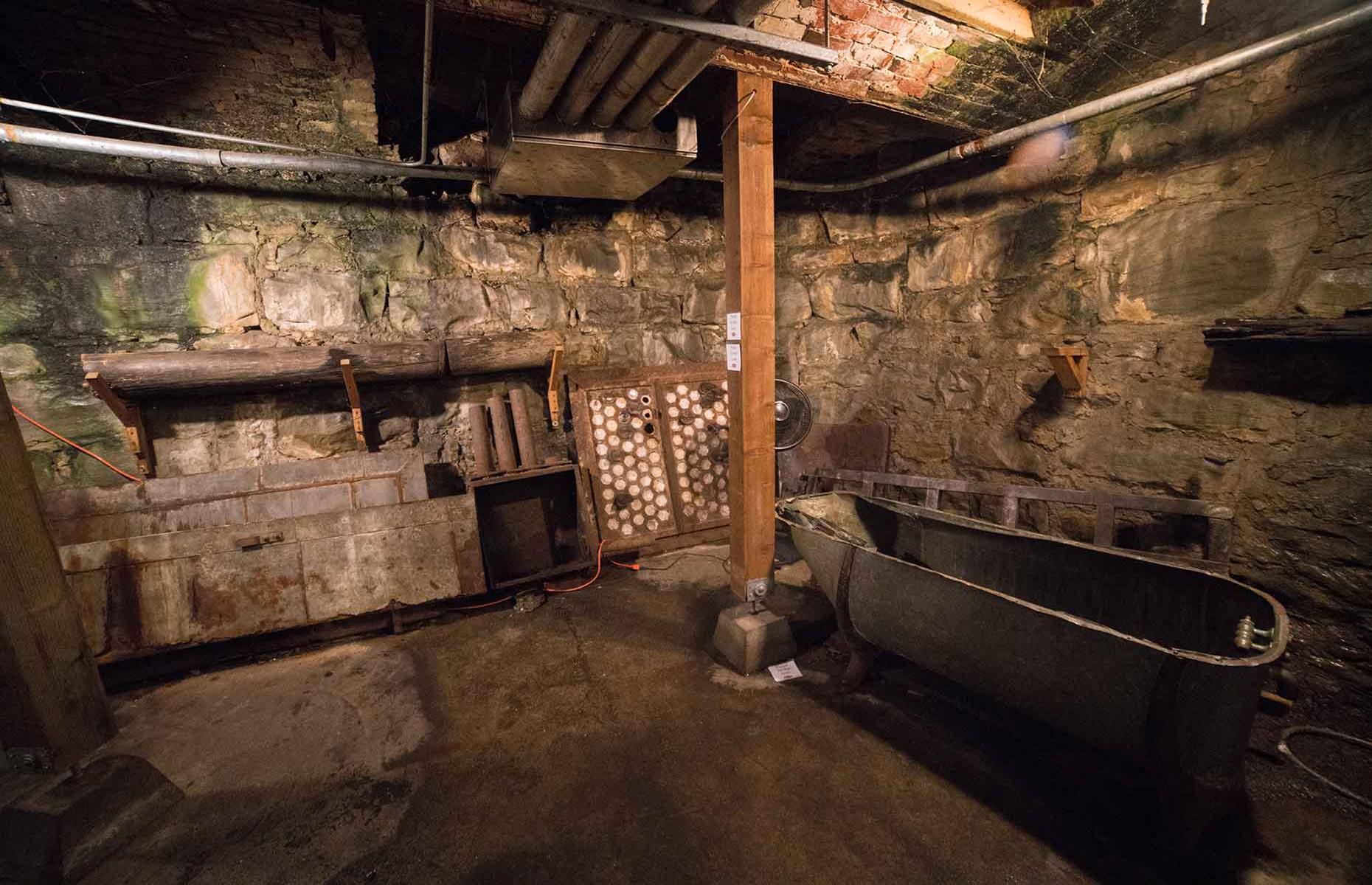
Seattle Underground City, Washington
When a fire razed Seattle to the ground in 1889, the city was rebuilt one story higher to lift it out of the boggy land. Roads were filled in and raised, and buildings reconstructed so their ground floors became basements. New pavements then bridged the gap between the raised roads and first-floor entrances, leaving tunnels below. Visitors can explore these subterranean passageways on a guided tour, taking in shop facades, bank vaults, and even a toilet.
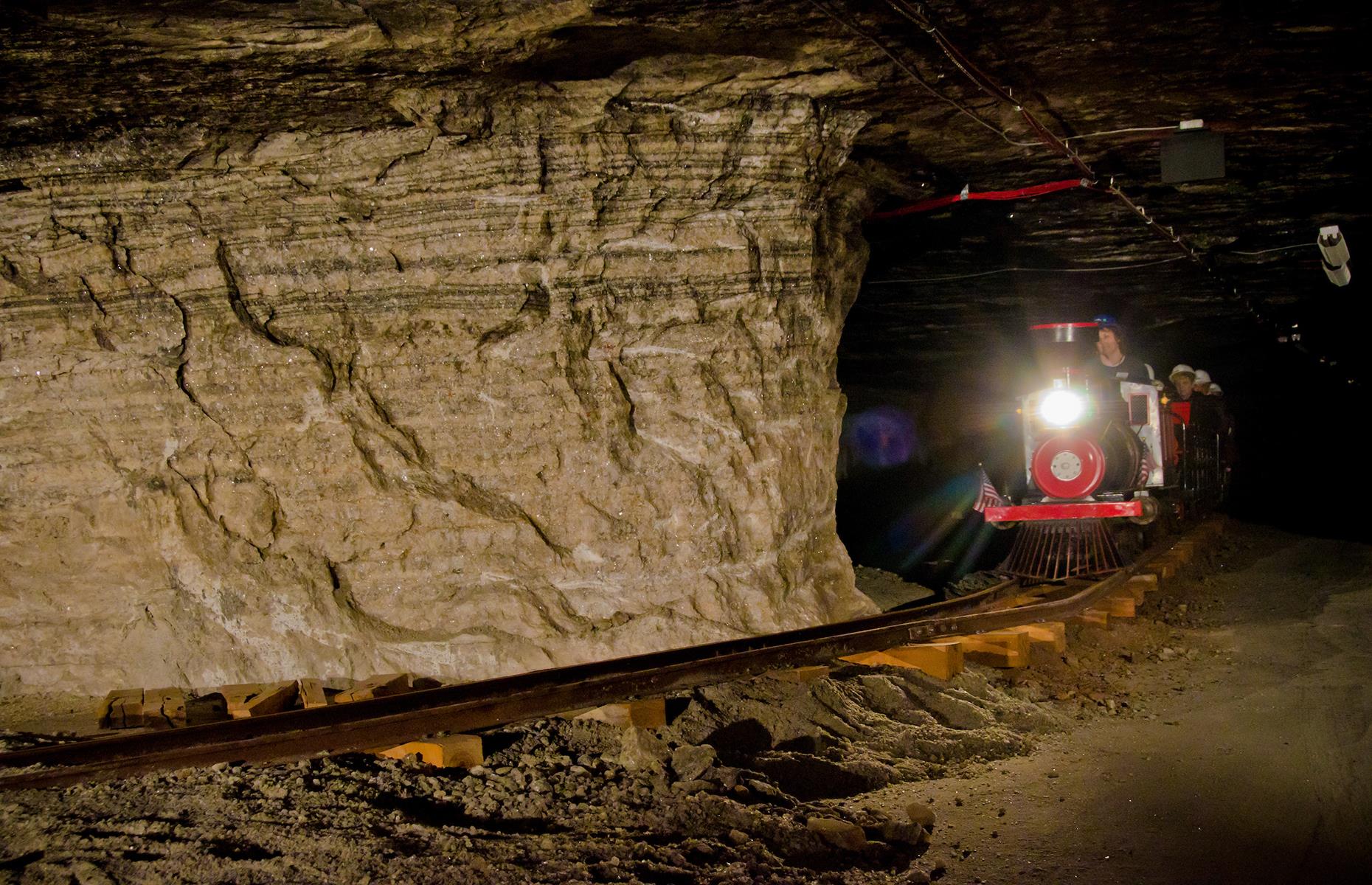
Strataca, Kansas
If you loathe lifts, you might not relish the 90-second descent into Strataca, an underground salt mine museum – but it’s worth the ride. The lift takes visitors 640 feet (195m) down into the vast mined-out area. Here, you’ll see giant salt rocks, learn about mining through the ages, and take a train ride through areas that were actively mined in the 1950s. A tram will take you deeper, if you dare, even turning off the lights for a few seconds so you can experience true darkness.
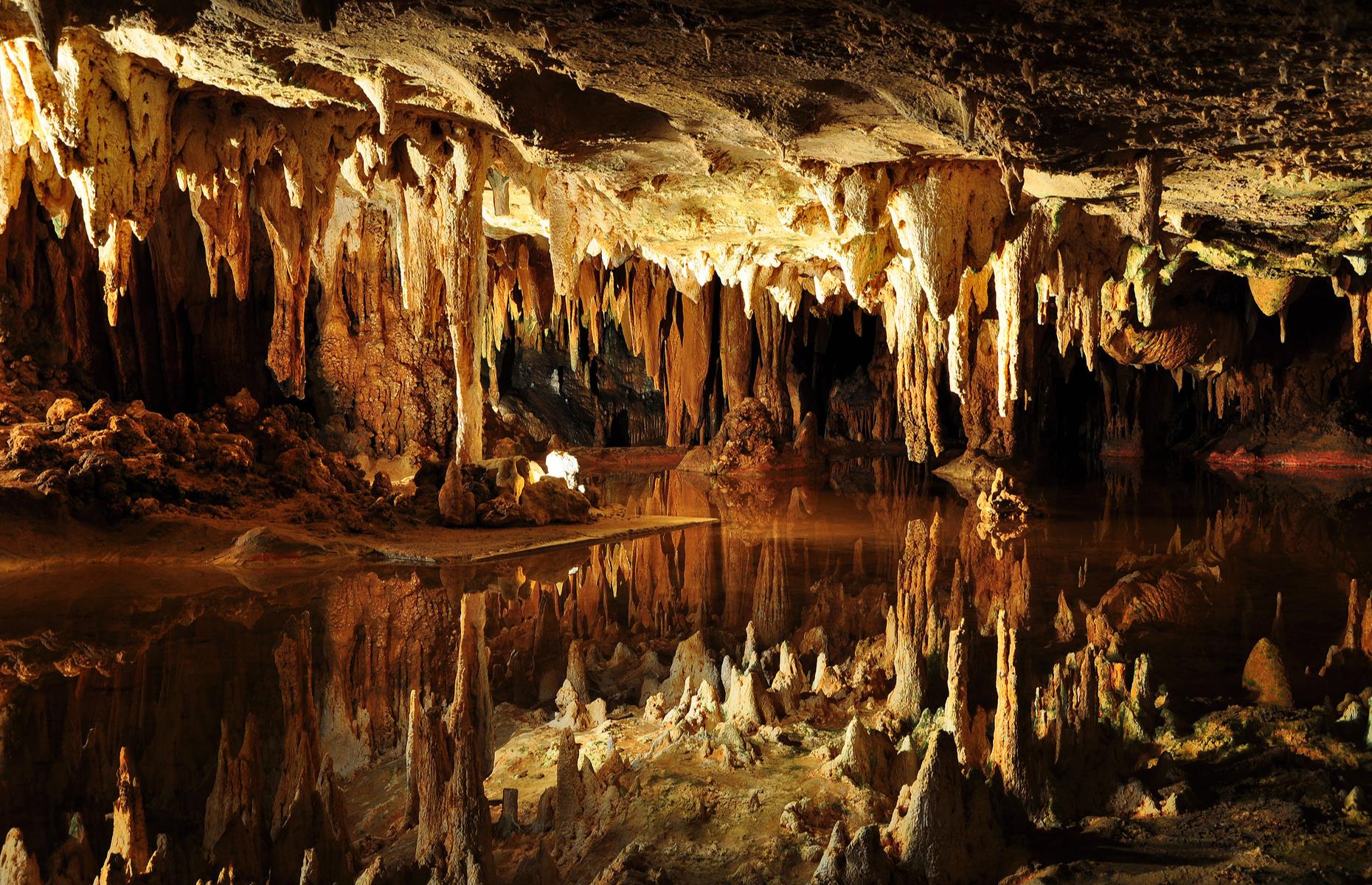
Luray Caverns, Virginia
Buried on the fringes of Shenandoah National Park, Luray Caverns is hard to beat for its staggering scale. You’ll find epic chambers with ceilings over 10 stories high, as well as crystalline pools such as Dream Lake, which has a surface so glassy it perfectly mirrors the stalactites above. There’s also the legendary Great Stalacpipe Organ, which can play Beethoven's Moonlight Sonata by using rubber mallets to strike 37 stalactites of varying sizes.
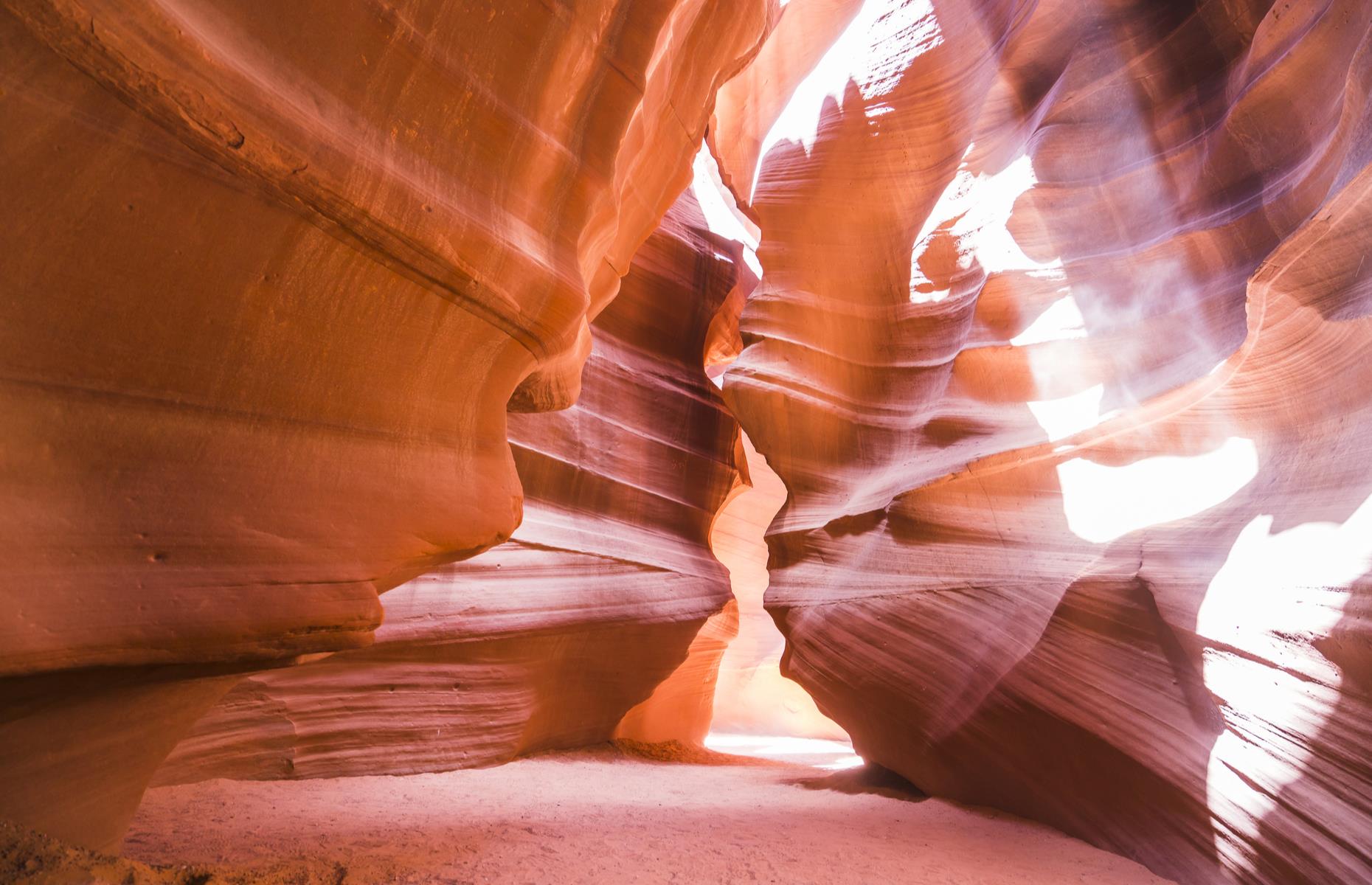
Antelope Canyon, Arizona
With its rolling waves of vibrant red rock, Antelope Canyon looks like it could belong on Mars. Eerie beams of daylight pierce through from above and cast shadows on the dusty canyon floor. The sandstone walls, which tower up to 100 feet (30.5m) high, have been sculpted into their wave-like shapes by the wind over millions of years. The canyon can only be visited on a guided tour as it's located within the Navajo Nation.
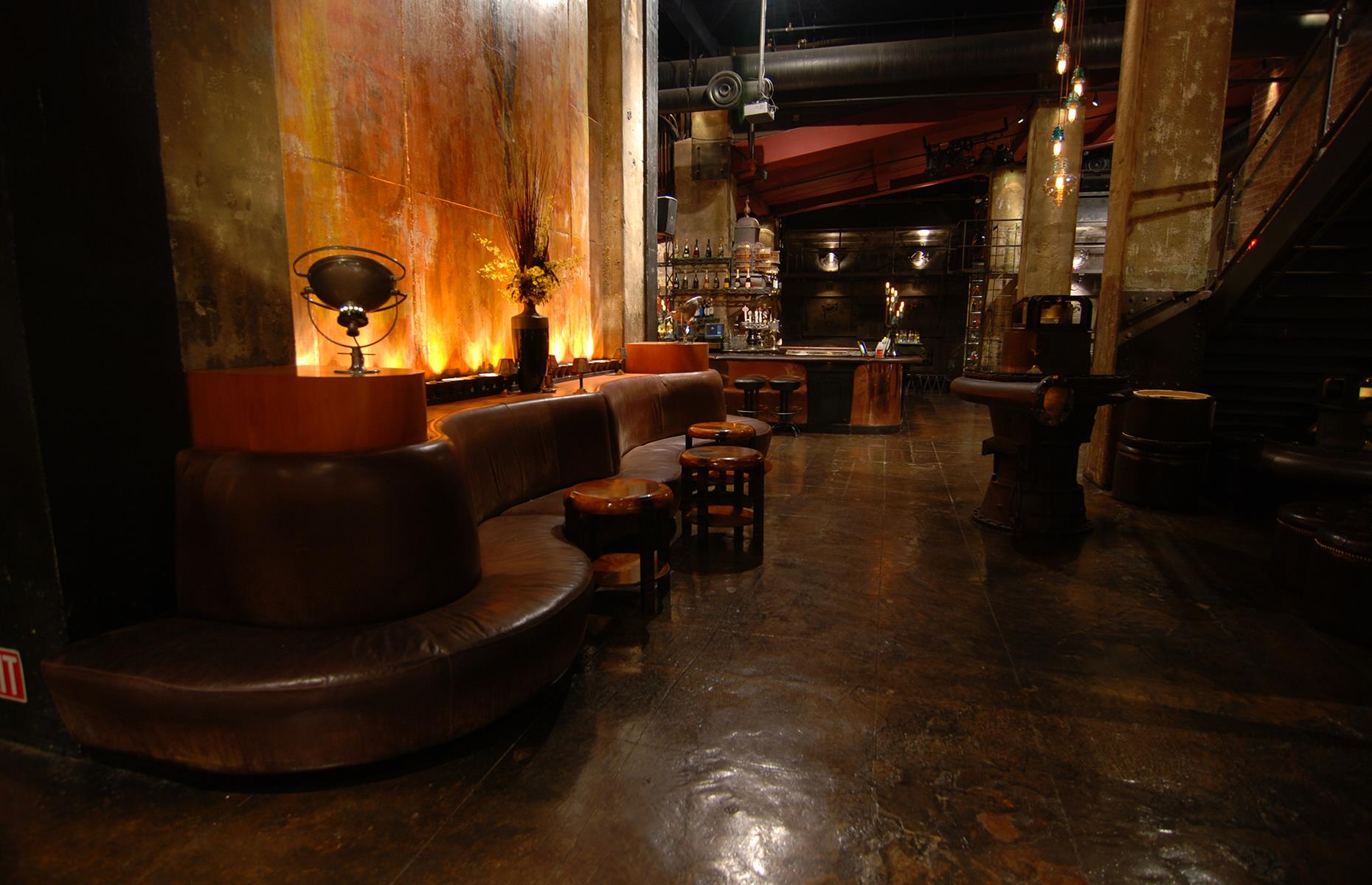
The Edison, California
What do you do with the basement that housed Los Angeles’ first power plant? You turn it into a bar of course, keeping the turbine steam generators and utility tunnels as a feature. Enter The Edison, one of the hottest spots in downtown LA, legendary for its cocktails and fizzing burlesque shows.
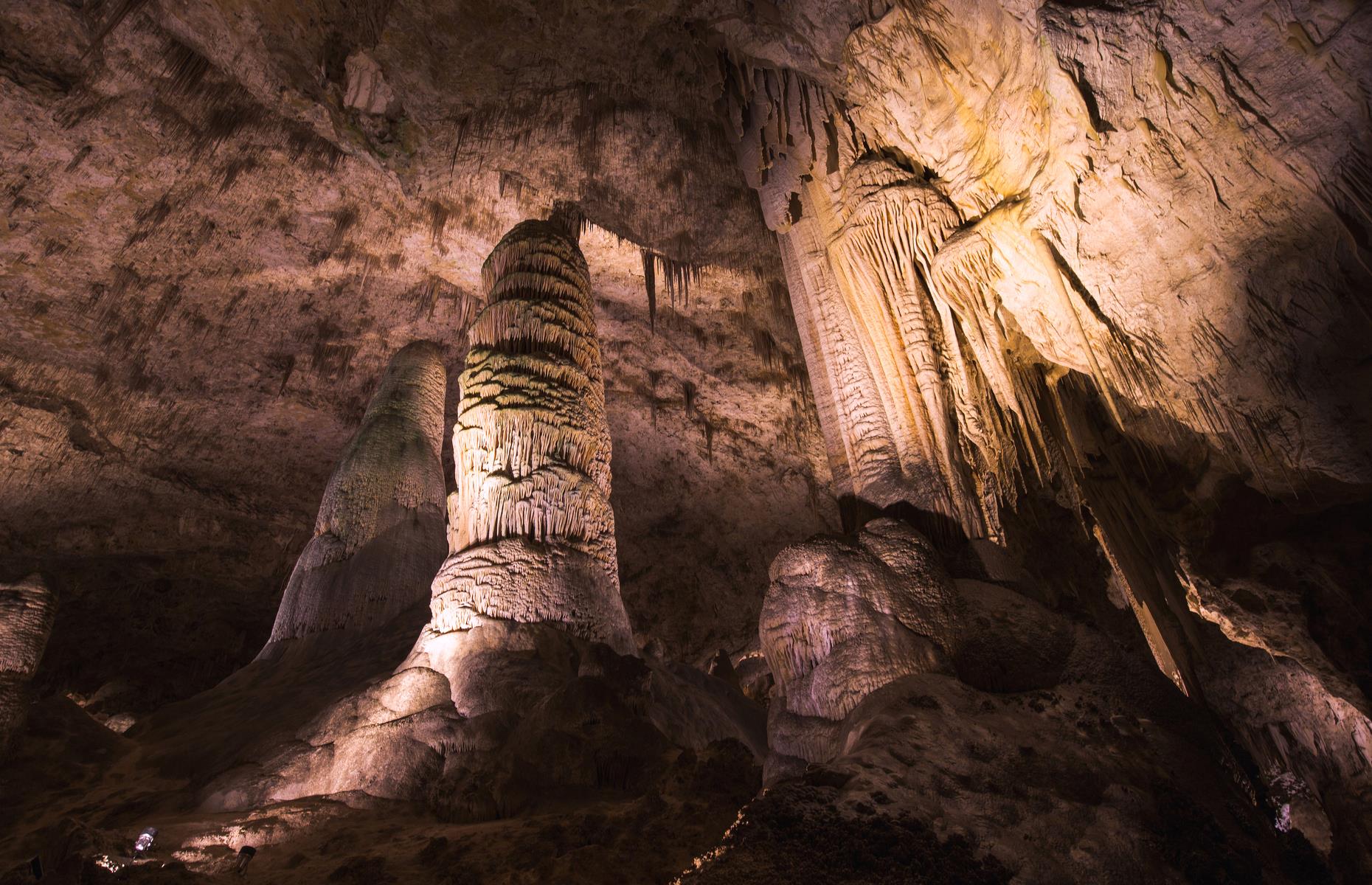
Carlsbad Caverns, New Mexico
Over 119 caves make up New Mexico’s Carlsbad Caverns. Within this vast cave network, 750 feet (229m) deep underground, is the so-called Big Room, a chamber so huge it could hold over six football pitches. The caves are home to half a million bats that can be seen swirling out into the night sky at dusk. Advance reservations are required to enter the national park.
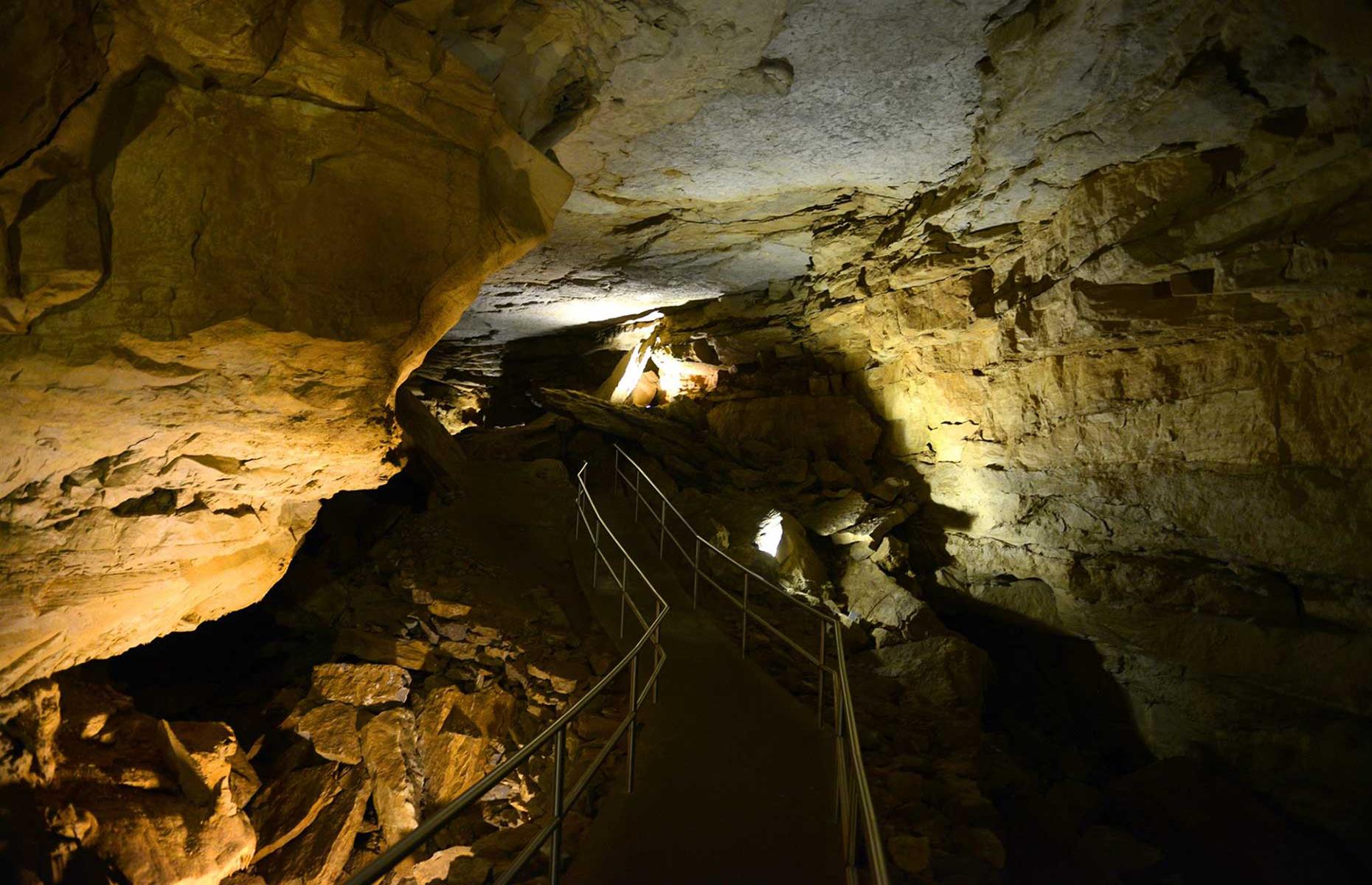
Lockport Cave, New York
It took nearly 15 painstaking years for workers to blast this 2,000-foot (610m) man-made cave out of solid rock. Created in the 1850s underneath the city of Lockport in New York, the chamber was designed to supply water from the Erie Canal to local industries. Underground boat tours can be booked in advance.
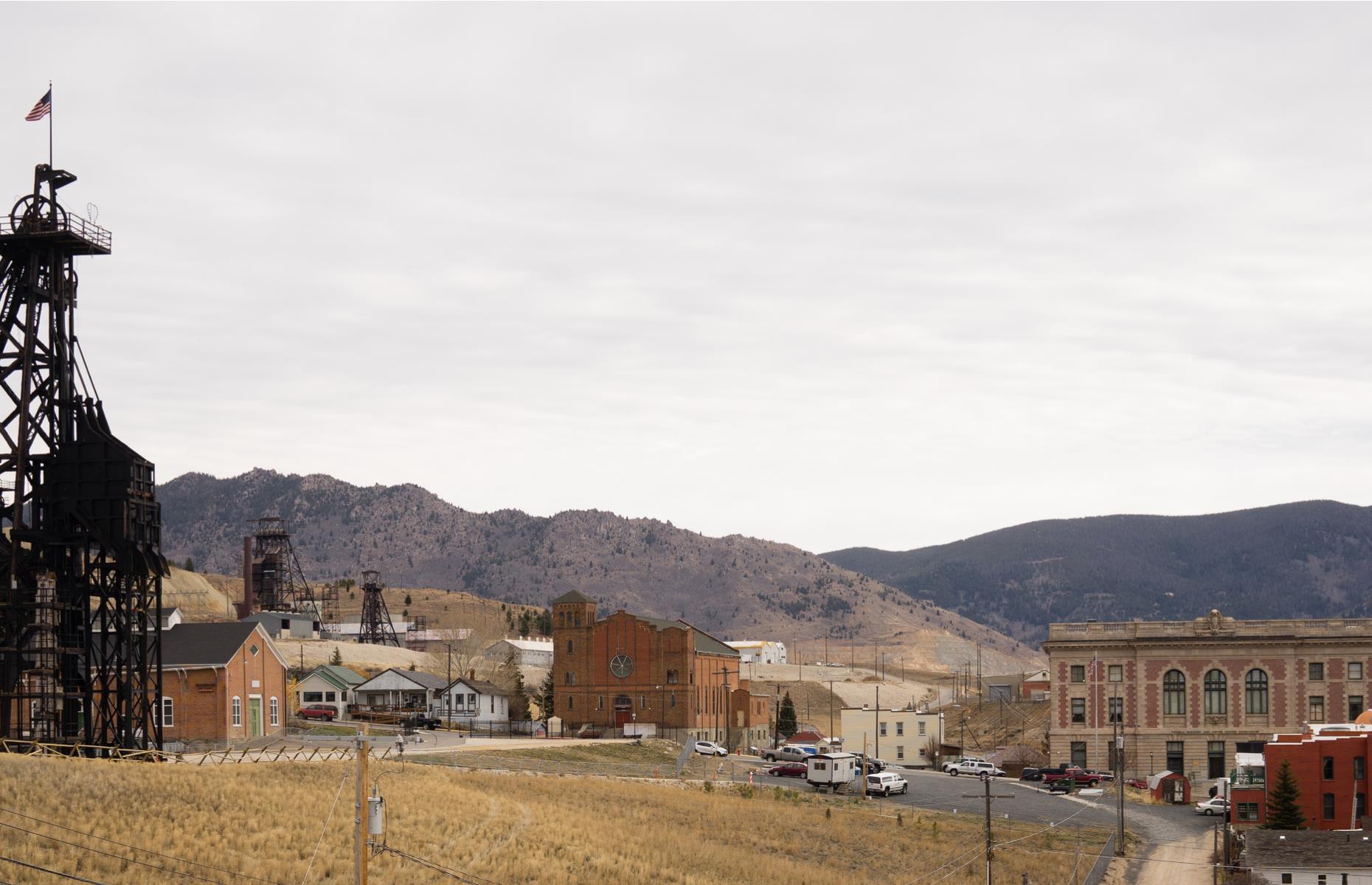
Butte underground city, Montana
Hiding beneath Butte, Montana is a deserted secret world, including a barber, shoe shops, a prison, and the Rookwood Speakeasy, a hidden bar from Prohibition days. These are well-preserved relics from the early 20th century, when mining was at its height and the population swelled to around 100,000. Space was at a premium so people started using underground areas connected by tunnels. Today, you can visit on a subterranean tour.
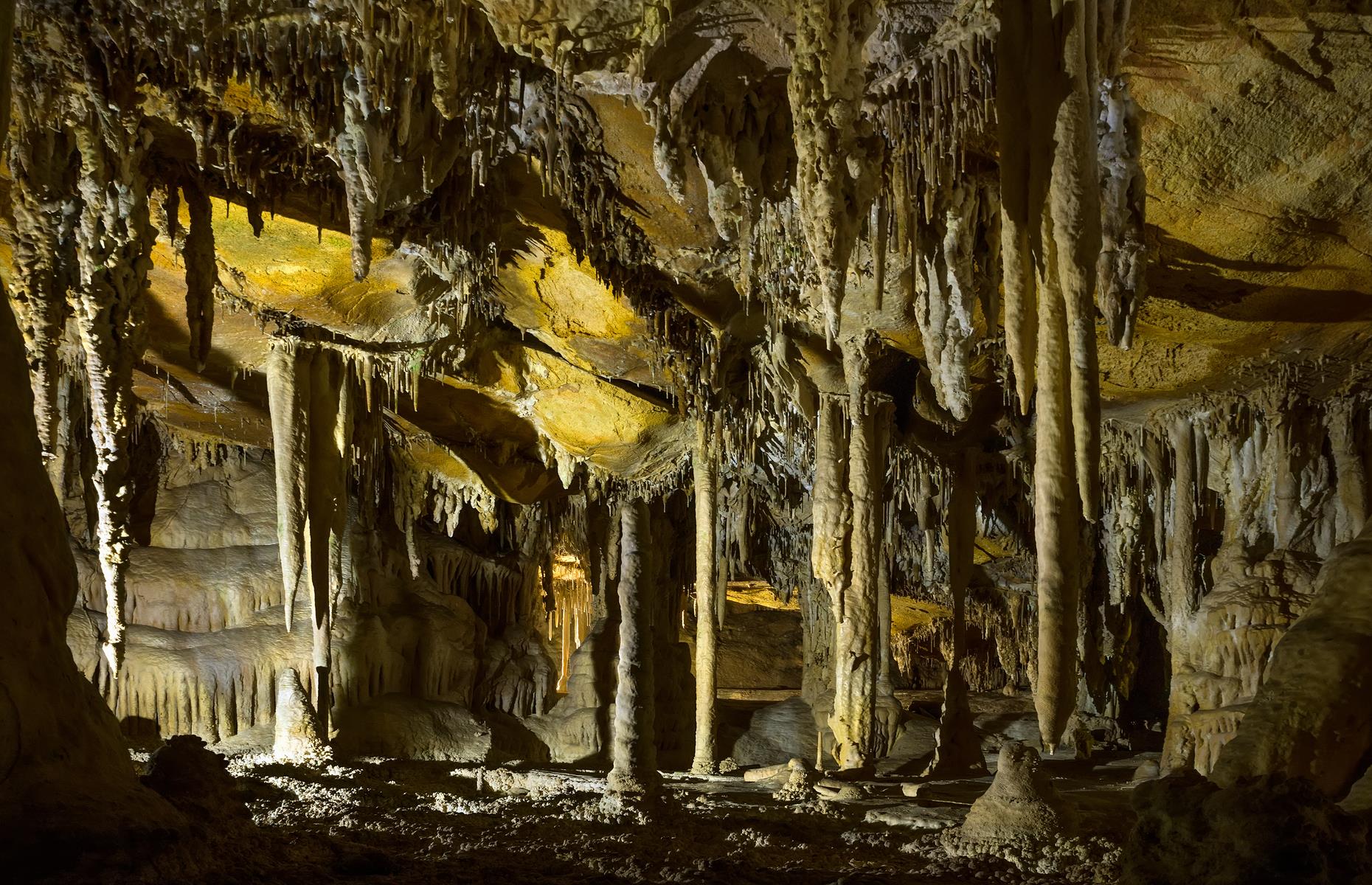
Lehman Caves, Nevada
Over millions of years, subterranean streams dissolved the limestone rock to form this spectacular cave system in Nevada's Great Basin National Park. During Prohibition it was used as a secret speakeasy but now the attraction is the thousands of delicate columns, hollow stalactites (known as soda straws), and needle-like crystals. Look out for "cave popcorn", formed from small lumps of calcite. It looks surprisingly like the real thing. It's recommended that you book a ranger-led cave tour in advance as they regularly sell out.

Homestead Crater, Utah
This geothermal spring in Utah is buried within a dome-shaped limestone rock. Here, you can swim, snorkel, and scuba dive in the blue, bath-like water (it’s 35°C/95°F). For divers, the charm isn’t the marine life (there is none), but the experience of diving down to 45 feet (13.7m) without the need for a wetsuit. Reservations need to be made in advance for the self-guided tour.
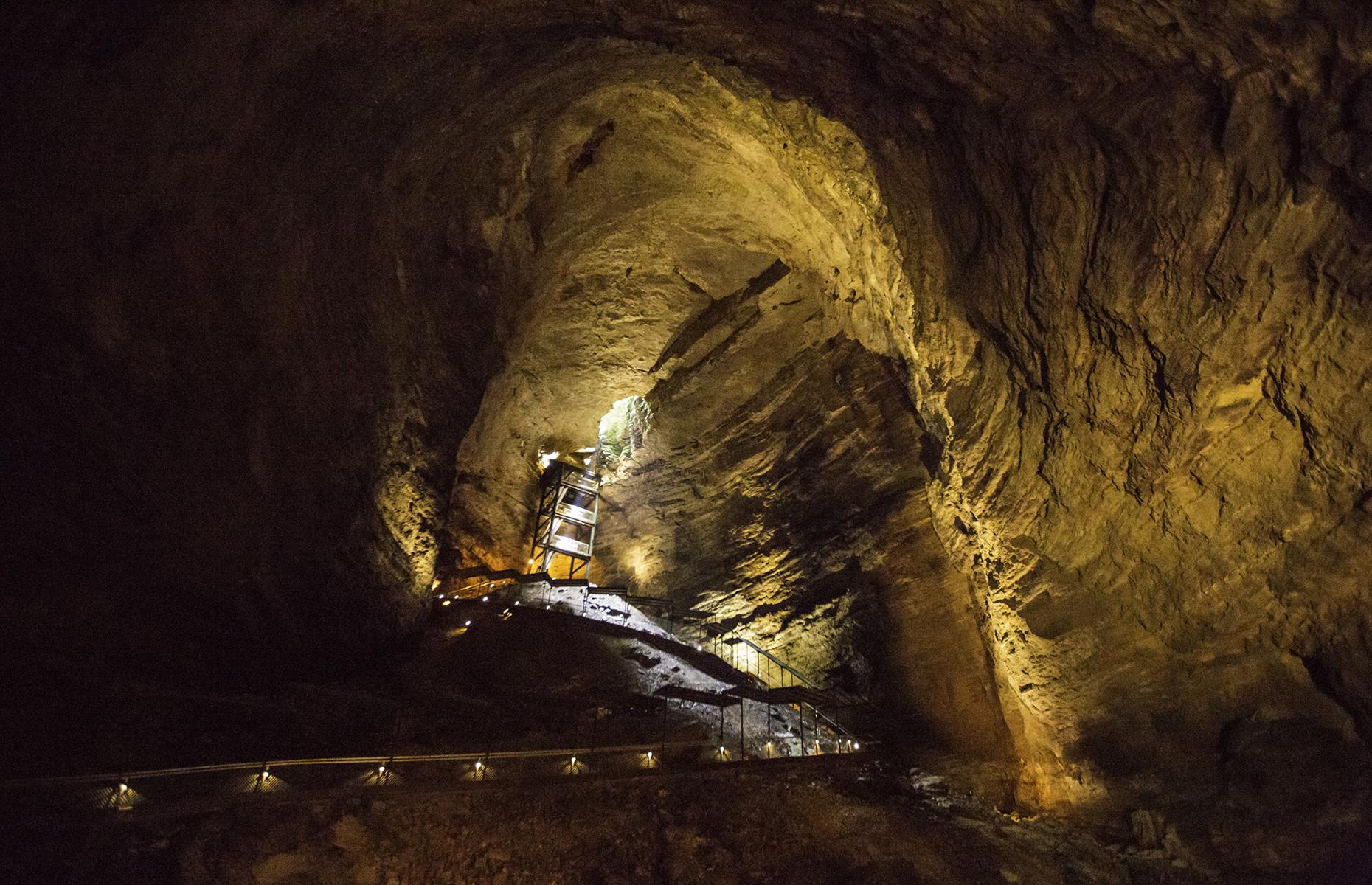
Marvel Cave, Missouri
In the 19th century, hopeful miners explored this cavern in Branson, Missouri on a quest for silver. Instead, they discovered bat dung so they set up a lucrative operation, selling it for fertilizer. Down some 600 steps, there are waterfalls and the epic Cathedral Room, big enough to house the Statue of Liberty. Marvel Cave is part of the theme park Silver Dollar City.
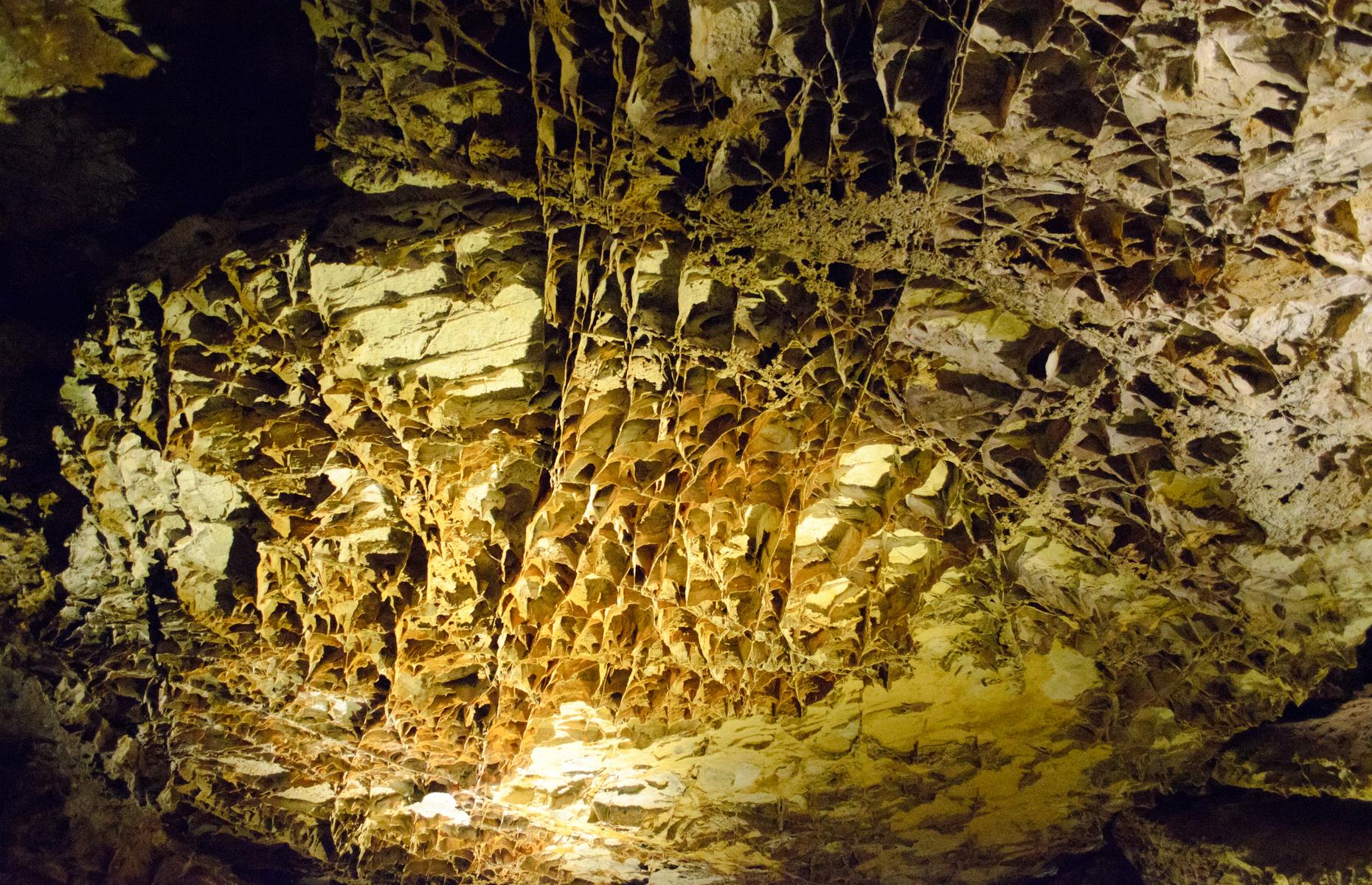
Wind Cave National Park, South Dakota
Deep under the South Dakota grasslands is Wind Cave, one of the world’s longest cave networks. Here, the oldest rock formations date back some 310 million years and powerful winds blast in and out of the cavern mouth, causing a whistling noise. To date, over 123 miles (198km) of rocky passages have been explored and six lakes discovered. Here the big draw is boxwork, where calcite forms in an intricate honeycomb pattern.
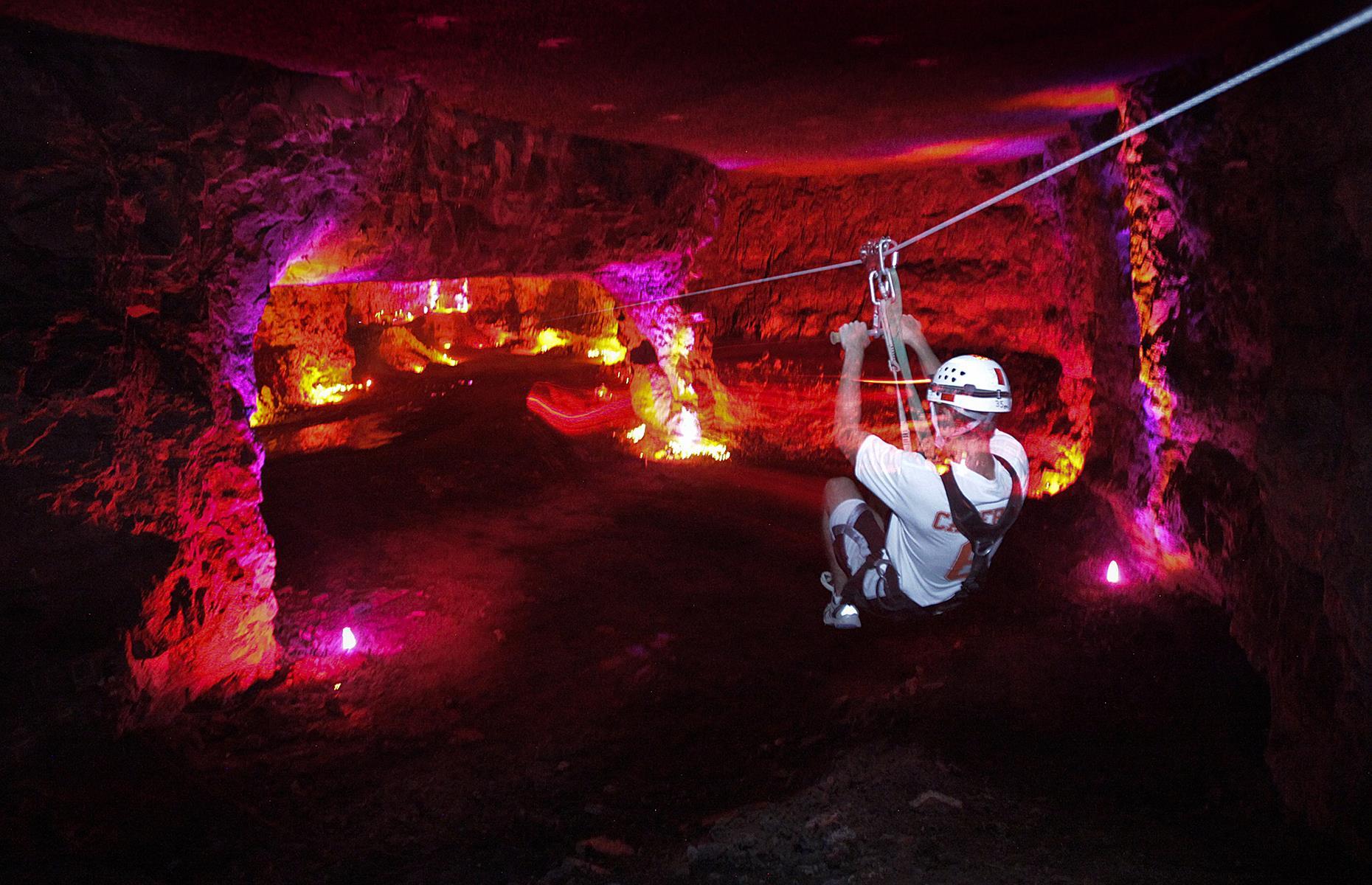
Mega Zips, Kentucky
Louisville Mega Cavern is actually a vast 100-acre limestone quarry, hollowed out by blasting when it was mined in the mid-20th century. Today, it houses Mega Zips, which boasts the title of the world’s only fully underground zip line course. Get your blood pumping as you slide through the air, reaching heights of up to 70 feet (21m).
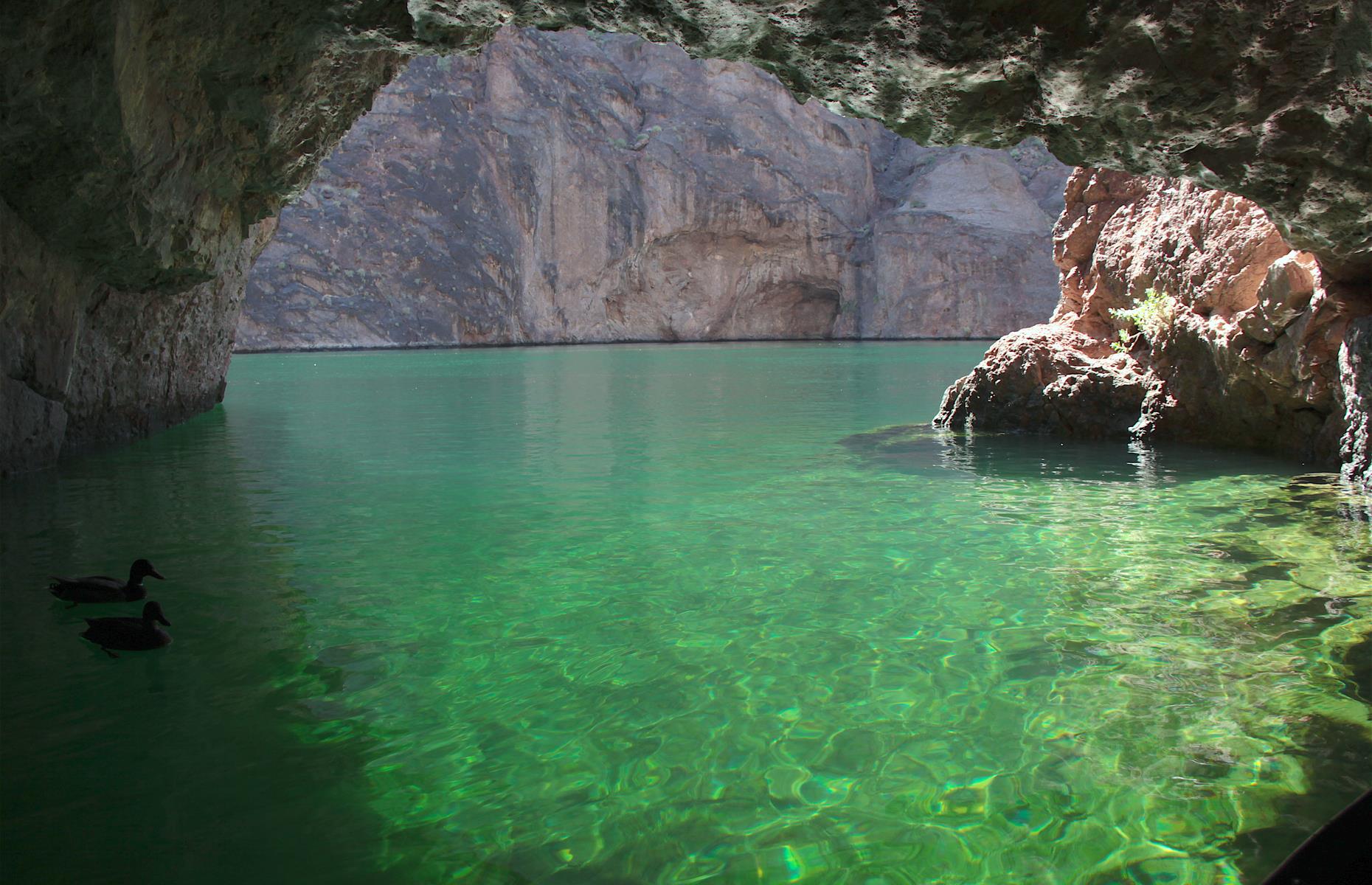
Emerald Cave, Arizona
The unspoiled Black Canyon is just a 45-minute drive from the bright lights of Las Vegas. Emerald Cave is the highlight on the Black Canyon National Water Trail, with its vivid green sparkling water. Visitors can kayak through the still waters of the cove, then paddle out of the glare of the sun and into the caves that burrow into the cliff face.
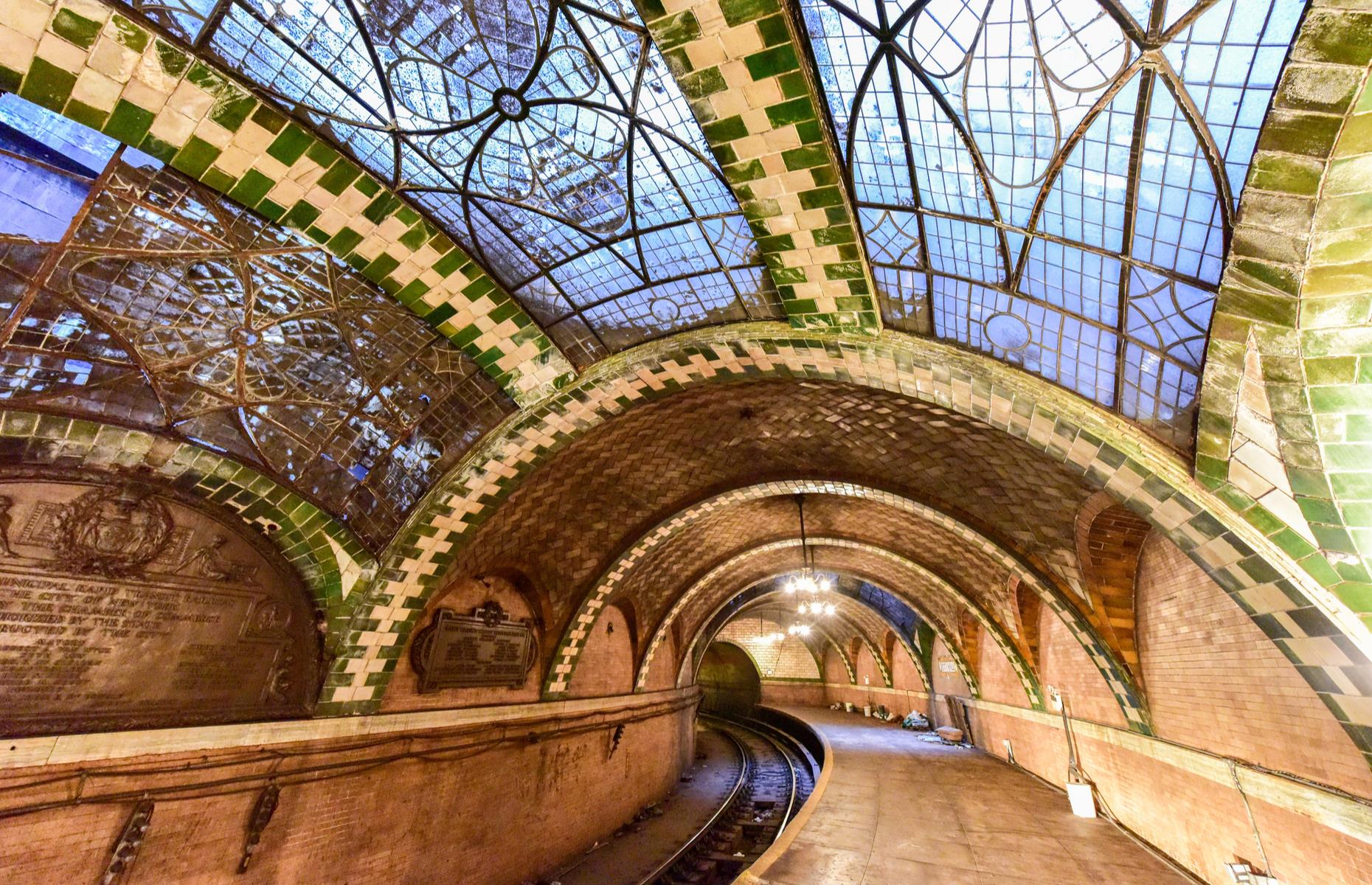
City Hall subway station, New York
With its leaded skylights, vaulted tile ceiling, and chandeliers, the abandoned City Hall subway station makes you wonder why other stations have to look so functional. City Hall opened in 1904 but closed in 1945 due to short platforms. The New York Transit Museum runs regular tours of the station, but you must book in advance.
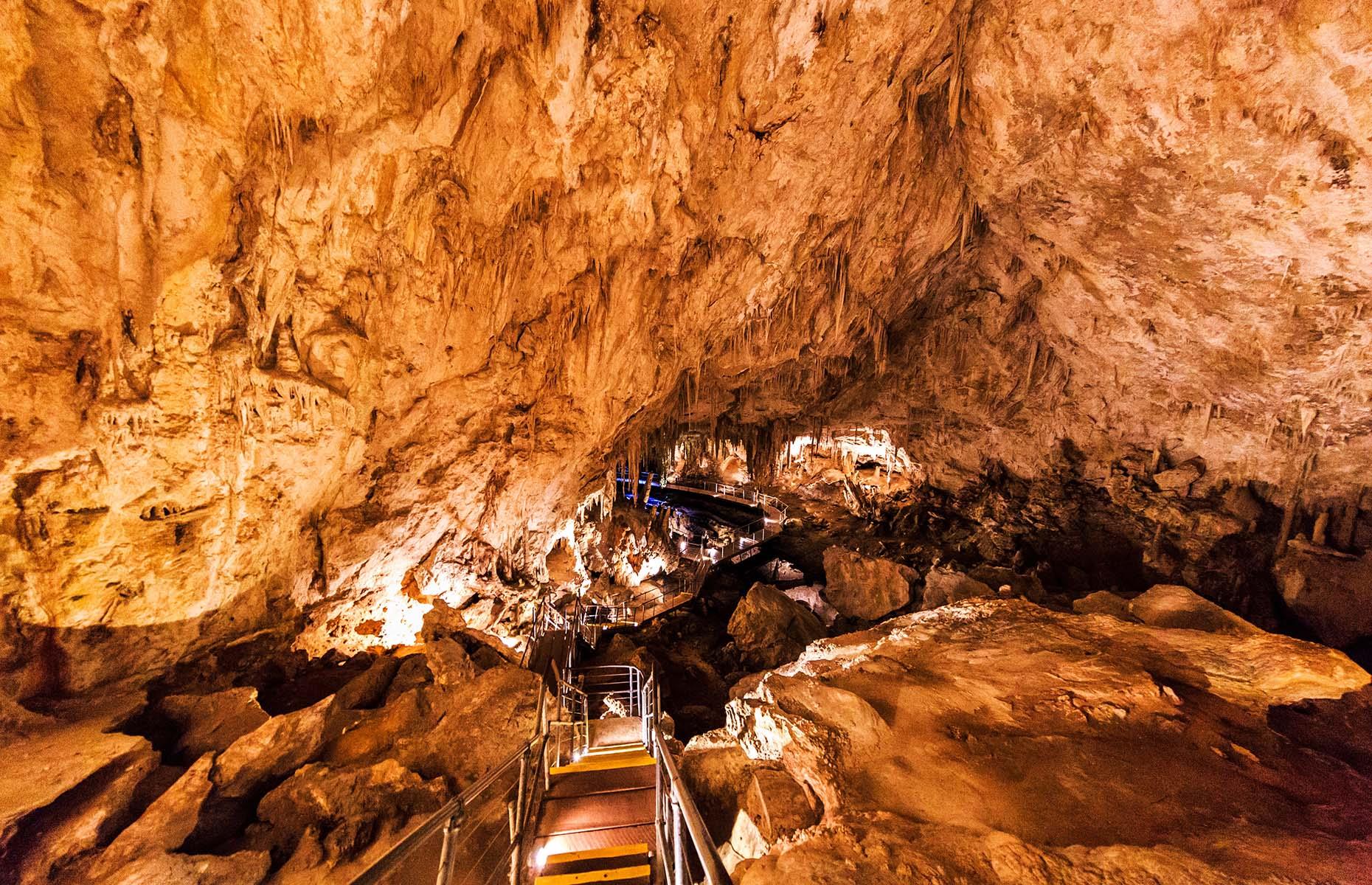
Mammoth Cave, Kentucky
Called mammoth for a reason, this labyrinthine network of caves within Mammoth Cave National Park has more than 405 miles (652km) of mapped passages, making it the longest system in the world. And now a team of researchers has discovered eight more previously unknown miles (13km) of underground passages. Visitors can explore 10 miles (16km) of tunnels on a guided hike. The formations are staggering – don't miss Frozen Niagara which looks just like a waterfall sculpted out of rock.
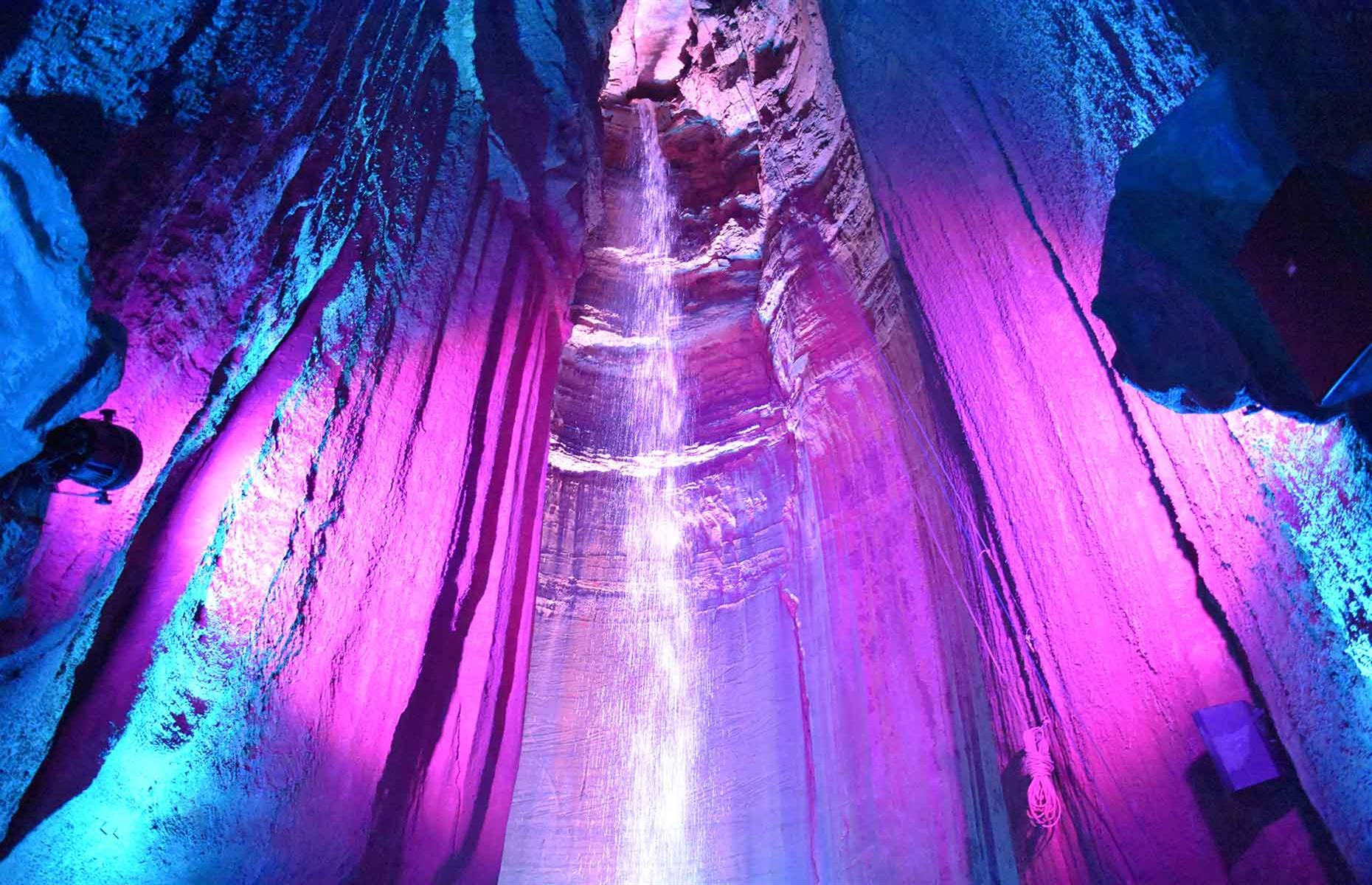
Ruby Falls, Tennessee
Ruby Falls is hidden 1,120 feet (341m) inside Tennessee’s Lookout Mountain. This cascade of water tumbles 145 feet (44m) into a limestone cave, against the backdrop of music and illuminated by colorful lights. Guided tours take you on the underground walk to the falls and, if bright lights and music aren’t your thing, there are limited spots available on evening tours, where the walk and falls are lit only by lanterns.
Now discover the world's best underground attractions
More for You
18 Things You Should Never Do At Work, According to HR Experts
Doctor shares what happens to our bodies moments before we die
Nuggets' Jamal Murray hit with $100,000 fine for throwing objects in direction of ref
Donald Trump Trails in Battleground State Poll for First Time in Six Months
The songs that spent the longest at the #1 spot on the Billboard charts
Jason Kelce reveals the 1 person he 'wouldn't allow' on stage if he was roasted
This is the salary it takes to be considered rich in every state
19 Things People Treat As Safe That Actually Are Pretty Dangerous
Steve Albini dies from apparent heart attack
Putin Ally Makes Surprise Nuclear Move
Your senses will shut down in a specific order when you’re about to die
‘Gray’ divorce is sky-rocketing among baby boomers. It can wreak havoc on their retirements
15 Jobs That Pay Insanely Well
18 ‘Normal’ Things From the ’80s and ’90s That Are Considered Luxuries Now
Baldwin leads Hovde by 12 points in Wisconsin Senate race: Poll
What Is the Most Poisonous Spider in the World?
Comedian Nikki Glaser shares Tom Brady roast joke she ‘pulled at the last minute’
Kids who do these 6 things have 'high emotional intelligence,' says parenting expert who studied over 200 children
Average US annual salary by age revealed – see how you compare
How Alexandra Daddario Transformed Into a “Woodland Nymph” for the 2024 Met Gala

IMAGES
VIDEO
COMMENTS
Bunker Tours depart from the Trellis Lobby near the Lobby Bar. Guests should check in at the Trellis Lobby no later than 15 minutes prior to the tour. Day visitors should allow ample time for parking and arrival at the Trellis Lobby. Comfortable shoes are recommended. The Bunker will be closed to tours April 8 - 11, 2024 & January 6 - 10, 2025.
A private tour will cost you though, since you basically have to buy out an entire tour time slot. The private tour rates are different for different times of the day. Greenbrier Bunker Tour Private Tour Rates: Before 5:00 pm: $875 per private tour + $30 gratuity. 5:00 pm - 6:30 pm: $1,245 per private tour + $100 gratuity.
The Bunker Tour at The Greenbrier is a 90 minute, guided group tour through the once top secret area built to shelter both houses of Congress in the event of an emergency. The tour begins in one of the front lobbies at the hotel, reveals one of the hidden entrances inside the resort, and then continues through the secret bunker's spaces, like ...
May 2021. If you are interested in the Bunker Tour, make sure you book a little in advance. I booked about a week out and some of the time slots were already taken. They do have more time slots than what it shows on the calendar online, so call to check. The tour is about 90 minutes long and there is a moderate amount of walking involved.
The Greenbrier Bunker Tour. 101 Main St. W. White Sulphur Springs, WV. Get Directions. (855) 453-4858. visit website. Step inside America's Secret Agent-Era Past. Exposed in 1992 by the Washington Post, the Bunker at The Greenbrier was one of America's most closely guarded Cold War secrets.
To learn the rest of the story -- and believe us, you'll want to -- reserve your spot on the tour. Tickets are $47 for adults and $24 for youth 10 - 18. Keep in mind the minimum age is 10. For 30-plus years, the bunker beneath The Greenbrier remained a best-kept secret. That is until reporter Ted Gup broke the story to the world.
If you haven't heard of the Greenbrier bunker tour—or the Greenbrier Hotel—it's a terrific trip to make and well worth the drive. Greenbrier Bunker Tour: Take This Trip. As of February 2017, tours are $34 for adults and $17 for kids (ages 10-17) excluding taxes. Children under 10 can't take the tour (it's a lot of walking and ...
Stop #22 on our Virtual Road Trip is the Greenbrier Bunker Tour! The luxurious Greenbrier is a destination hotel in the Allegheny Mountains of West Virginia. The hotel was built in 1913, with 743 well-appointed rooms and 96 guest estate homes. The resort includes restaurants, unique shops, championship golf, a spa, and more than 55 activities ...
Greenbrier Bunker Tour. Oct 2022 • Couples. Tour was great, led by an enthusiastic, knowledgeable guide (Kate). Great history of the bunker construction and operation and how it was hidden from managers and employees for 30 years. ... Honduras Ice Cave Tour in the National Park of Vatnajökull Twilight Sip and Dine St. Petersburg ...
National Park Whitewater Rafting in New River Gorge WV. 298. On the Water. from . $88.00. per adult (price varies by group size) Roanoke Downtown Food and Cultural Tour. 53. Food & Drink. ... The Bunker Tour at The Greenbrier - All You Need to Know BEFORE You Go (2024) White Sulphur Springs.
The Greenbrier bunker is buried 720 feet underground. It would not survive a direct nuclear strike, but is capable of weathering a blast 15-30 miles away and protecting its occupants from fallout. The two-level facility is 112,544 square feet, roughly the size of two football fields on top of one another. The bunker has four doors, all made by ...
The Greenbrier is a luxurious resort located in rural West Virginia, established in the early 19th century. During World War II, The Greenbrier "went to war" for the United States, serving as an internment center for enemy diplomats, a general hospital for US troops, and a Cold War-era bunker location. The town of White Sulphur Springs in ...
Opened in 1778, The Greenbrier - America's Resort (formally known as the White Sulpher Spring) is located on 11,000 acres with a guest list that includes 28 U.S. Presidents, countless celebrities, sports figures, business leaders, and even royalty. In fact, when I visited, the San Fransisco 49ers were there (yes, the entire team).
The Greenbrier Bunker is a must-do experience that takes you behind the scenes and walks you through an interesting period in the resorts
Found. The document has moved here.
The luxury hotel located in Sulphur Springs, West Virginia, concealed an emergency bunker hidden 750 feet below the surface that was developed in 1958 specifically for US politicians to take ...
The North Entrance of The Greenbrier in White Sulphur Springs, West Virginia. / 37.784556°N 80.308861°W / 37.784556; -80.308861. Project Greek Island (previously code-named "Project Casper" [1]) was a United States government continuity program located at the Greenbrier hotel in West Virginia. [2] The facility was decommissioned in ...
Josh Gates explores The Greenbrier Resort, a historic West Virginia resort that was once home to Project Greek Island, a plan to protect high-ranking America...
The Greenbrier. 3,677 reviews. #1 of 1 resort in White Sulphur Springs. 101 Main Street West, White Sulphur Springs, WV 24986-2498. Write a review. Check availability. Full view.
Request a Reservation. Savoring every bite of your Greenbrier getaway starts here. Online reservations must be made at least 48 hours in advance. To make a reservation within 48 hours, please contact us at +1 855-453-4858. Please note that only select dining experiences accept online reservations. First Name. Last Name.
Hidden beneath the West Virginia wing of the Greenbrier resort, behind 18-tonne blast-proof doors, is the Greenbrier bunker. It was built as a top-secret project in the late 1960s, to safeguard ...
Resort Fees and Taxes. West Virginia State Taxes: 6% sales tax & 3% occupancy tax. Daily Resort Fee: $39.00 per room, per night and includes: Morning Coffee Service Afternoon Tea and Concert Nightly Movies in the Theatre Historical Tours & Presentations Fitness Equipment Children's VIP Bags Resort-Wide Wireless Internet Use of Indoor & Outdoor Pools Champagne Toast in The Casino Club ...
Interior Tours focus on the most important chapters of The Greenbrier story, as well as the famed interior decorating company, Dorothy Draper & Company, which has given America's Resort its signature look for more than 75 years. Each tour is created specifically to answer the questions guests want answered. Interior History Tour is included ...